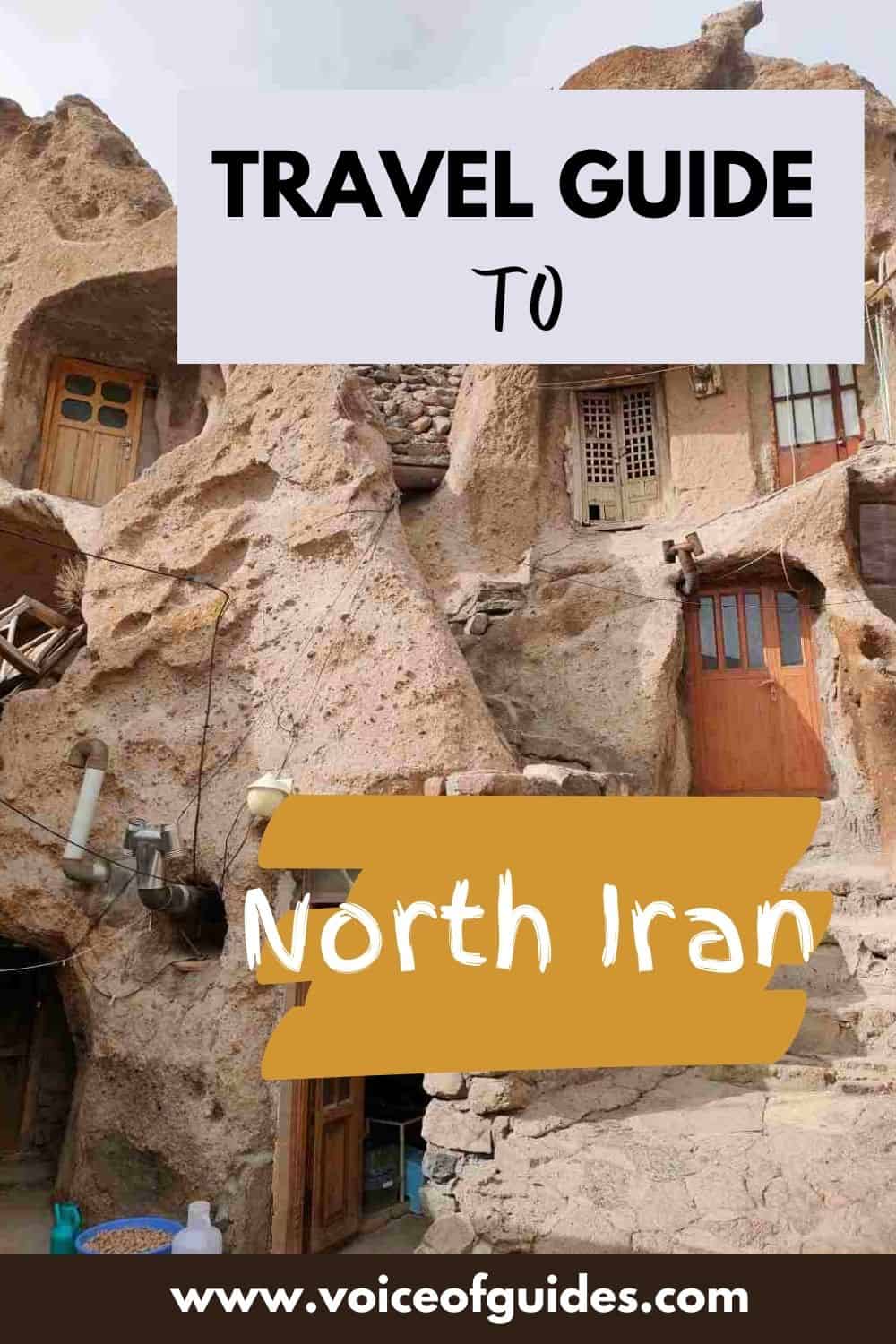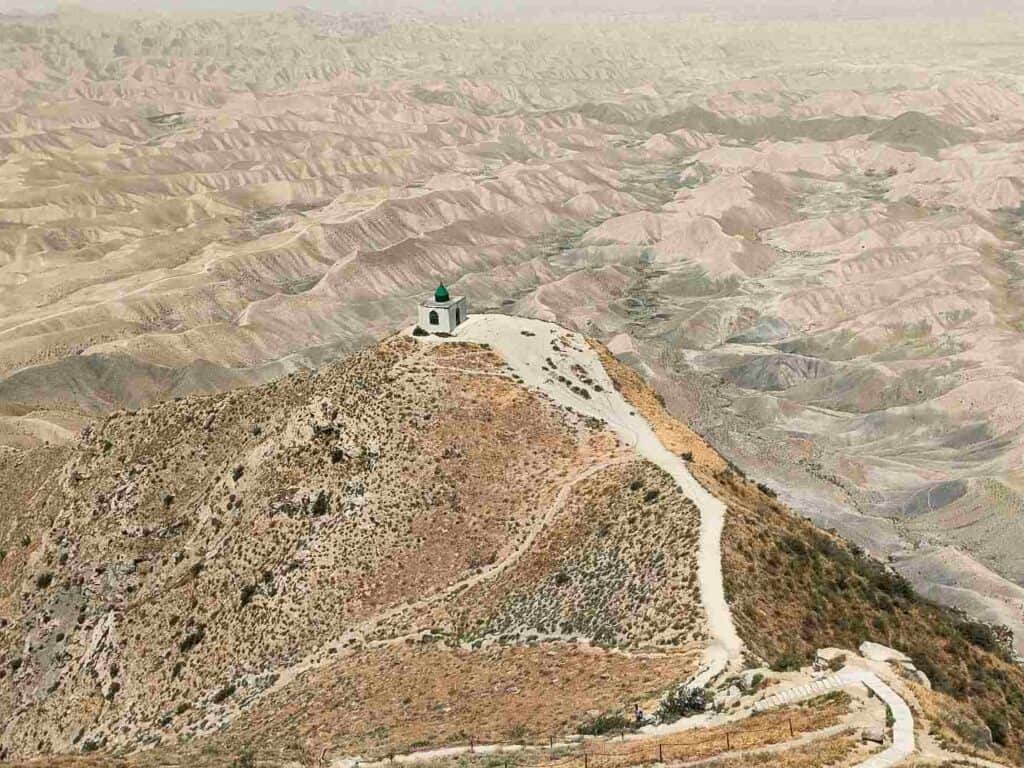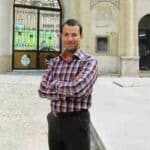This article may contain affiliate / compensated links. For full information, please see our disclaimer here.
The north of Iran has an entirely different landscape from the rest of the country. Mountains covered with vast forests, tropical jungles, holiday resorts along the Caspian sea, and the reputed cities of Tabriz, Ramsar, Rasht, and the holy city, Mashhad, are the main attractions. Tehrani people love heading to the green north, especially during the hot summer weekends. You can start visiting the north of Iran from the northwest and finish in the holy city, Mashhad, with a possible extension towards South Khorasan. This is a more off-the-beaten-track part of Iran with less information available. That’s why I made this ultimate travel guide and north Iran itinerary that contains the essentials to travel around Zanjan, East Azerbaijan, Gilan, Mazandaran, Golestan, and Razavi Khorasan provinces.
- Important things to know about traveling to northern Iran?
- When is the best time to go to North Iran?
- The best 2-week itinerary in North Iran
- Day 1: Tehran
- Day 2: Zanjan, Soltaniyeh, Daskhkasan temple
- Day 3: Zanjan, Behestan Castle, Takht-e Soleyman, Takab
- Day 4: Urmia city, Urmia lake and the Shahar Chay dam
- Day 4: Kandovan/Tabriz
- Day 5: Rainbow mountains and Babak fort
- Day 6: Tabriz, Ardabil
- Day 7: Rasht, Masuleh
- Day 8: Rudkhan castle, Lahijan
- Day 9: Ramsar
- Day 10: Sari, Sefid Chah cemetery, Gorgan
- Day 11: Gonbad-e Kavus, Khalid Nabi cemetery
- Day 12: travel from Gorgan to Mashhad
- Day 13: Mashhad, the holiest city of Iran
- Day 14: Mashhad, Tehran
- Other articles about Iran
- More articles about the Middle East
- Pin it for later!
- How to plan your trip to Iran
- How to plan your trip to Iran
- How to plan your trip to Iran
Important things to know about traveling to northern Iran?
Landscape
Northern Iran, characterized by the Caspian Sea, with extensive beaches and holiday resorts, is one of the most beautiful places in Iran. It is the biggest lake on earth (372 000 km2), divided among five countries: Russia, Iran, Azerbaijan, Kazakhstan, and Turkmenistan. The legal status of the Caspian Sea had been long debated until an agreement put an end to that in 2018. It was a crucial subject concerning the fact that the Caspian Sea has significant oil and gas reserves. With the currently increasing European need for gas, the lake is expected to be geopolitically even more important.
The first question to be clarified at the summit was whether it is a sea or a lake, which defines how the mineral sources can be exploited. They decided it was neither a sea nor a lake; instead, it should enjoy a Special Legal Status. However, many Iranians were disappointed by the agreement saying that the country should have achieved a better deal.
Do you want to know more about Iran? Here is a list of the best books to read about Iran (constantly updated)
The Caspian Sea provides 80-90% of the world’s caviar and the best quality. However, you get disappointed if you expect to find caviar everywhere in Iran because there isn’t. Almost all the caviar is exported abroad.
Northern Iran does not have as extraordinary historical monuments as the classical itinerary with Tehran, Isfahan, or Shiraz. It is more the versatile landscape that makes the trip memorable.
45 tips and must knows before traveling to Iran
People
Iran is a blend of multiple ethnic groups with different traditions, languages, and mentalities. The people of the north of Iran belong to the Turc/Azeri, Gilak, Tat, Mazani, Turkmen ethnic group and speak that as their first language.
Here is the list of the best books about Iran to prepare for your trip
Transport
Shared taxis are available in most places; however, keep in my mind that the transport connection between the cities in the north is not as frequent as between the most touristic cities (Tehran, Isfahan, Yazd, and Shiraz). You probably need to wait longer until a shared taxi gets full, or there is only a private taxi available. There is no public transport at some places, and you need to ask someone to give you a lift. Don’t worry; many people are happy to take you for some extra money during these hard times in Iran.
Language
Most people in northwestern Iran speak various languages (Turkish, Azeri, Farsi), but only a few speak English, which makes it a bit more challenging to communicate and get information. People of the northern provinces (Gilan, Mazandaran and Golestan) speak Gilaki, Mazani, Tati and Turkmen languages. In the West, people mostly speak Kurdish. This is not something that should deter you from traveling there.
Cuisine:
They say that the best quality rice is found in northern Iran, in Gilan province, which they also use for making sweets. Due to the proximity of the Caspian sea, fish specialties are more widespread than in other parts of Iran. Garlic is one of the main ingredients of northern meals.
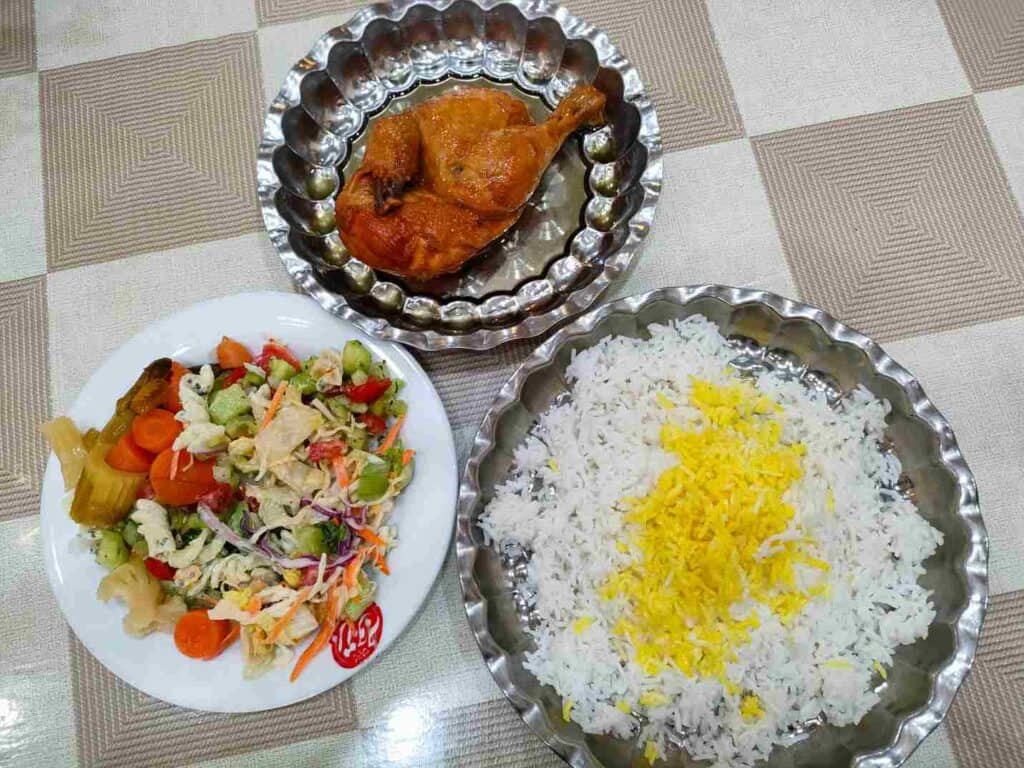
Akbar Joojeh (fried chicken served with saffron rice) is a specialty of Galugah city in Mazandaran province that got its name after Haj Ali Akbar Kalbadi, the owner of Akbar Joojeh restaurant.
This chicken dish is prepared in three steps. First, they cook the chicken with little water. Then it is dipped in local butter so that it cooks completely, and the butter penetrates the chicken bones. Finally, the chicken is removed from the butter and fried in abundant oil, making the chicken greasy. For this reason, they often serve it with a slightly sour pomegranate sauce to help digestion.
Read more about what to taste in northern Iran here.
How to plan your trip to Iran
Book your flight to Iran: I always use Google Flights, Skyscanner or Wayaway to find the cheapest flight tickets worldwide. To get an extra 10% for your Wayaway Membership Plus program use my discount code VOG
Important: Booking.com and other common platforms do not work due to international restrictions in Iran. The only exemption is Skyscanner, where you can book both your international flight and accommodation in Iran!
Book your accommodation in Iran: Hostelworld.com offers a limited number of hostels. All other services are only available through local travel agencies, like 1st Quest.
Get your visa to Iran: 1st Quest or Tap Persia local companies can easily arrange your insurance for Iran
Book domestic flights, hotels, transfers, bus and train tickets, and local tours, all in one place via 1st Quest travel agency.
Another good thing is that by using my discount code, you get an extra 5% off your bookings: VOG%1stQ
Virtual Private Network (VPN): Use VPNExpress, the fastest and best Virtual Private Network to get access to blocked sites in Iran and to prevent hackers from stealing your private information.
Insurance to Iran: 1st Quest or Tap Persia local companies can arrange for you visa to Iran
Book local guides and local tours: Pirsik is specialized in offering tour guides and local tours in less touristic countries, including Iran.
When is the best time to go to North Iran?
During winter, the temperature drops, and snowfall is expected. The best time to go there is from late spring till early autumn (May-September). The rest of Iran is often unbearably hot during the summer months, making northern Iran an ideal destination.
In May, the hills surrounding Tabriz, Urmia (Orumiyeh), Turkmen Sara turn green, dotted with flowers, and the colors give an extra charm to the landscape.
The best 2-week itinerary in North Iran
Day 1: Tehran
On the day of arrival (most probably during the night or early morning), spend a day with sightseeing in Tehran. If it is your first time in Iran, I recommend visiting
– The Golestan Palace
– The Grand Tehran Bazaar
– The National Treasury (it has restricted opening times, so check it before)
– The National Museum
– The Tabiat bridge
– Tajrish bazaar and Imamzadeh Saleh
If you are not the first time in Tehran, you can check out other places on this day:
– The Den of Espionage Museum
– Carpet Museum or Sa’dabad Palace Complex built by the Qajar and Pahlavi monarchs
– Take the cable car to Mount Tochal and enjoy the best view of Tehran
– Chill out at Darband in the north of Tehran in the evening
These articles help you plan your visit to Tehran:
The best things to do in Tehran in 2-3 days
The best places to visit in Tehran: museums, palaces and religious sites
1 night in Tehran
Day 2: Zanjan, Soltaniyeh, Daskhkasan temple
Head to the north from Tehran to Zanjan.
Soltaniyeh (“Town of Sultans”): the Oljeitu Mausoleum
The Ilkhanid Mongols built Soltaniyeh as their Persian capital at the beginning of the 14th century, but it was destroyed by the Mongol invader, Tamerlane. Here stands the mausoleum of one of the Mongol rulers, Muhammad Khodabandeh (also called Oljaito), with one of the world’s largest blue-tailed brick domes. Three thousand workers worked on that for ten years to complete this masterpiece.
The tomb has some other unique features. First, the tomb has an octagonal base topped with a dome of extraordinary parameters: 50 meters tall, 200 tons, and 25.5 diameters.
It is one of the first structures built with a two-shelled type of dome. Only the Santa Maria Cathedral in Florence and Hagia Sophia in Istanbul precede that.
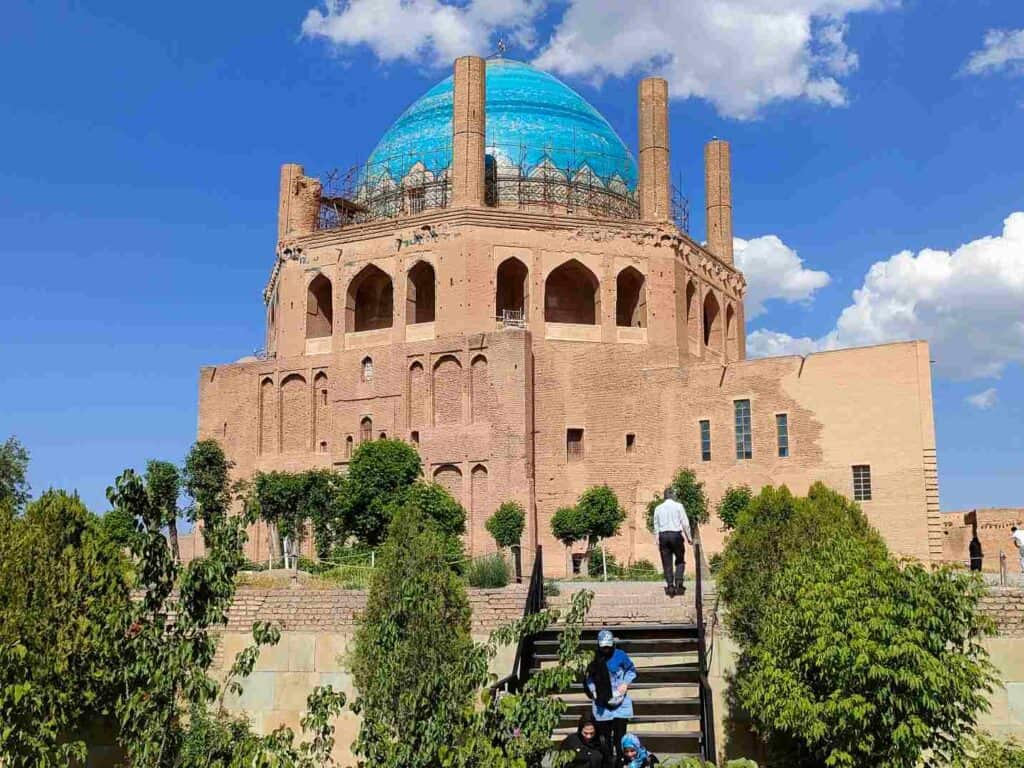
The Mongol ruler had plans to transfer the bodies of two highly revered Shia Imams to the mausoleum, that of Imam Ali (the son-in-law of Prophet Mohammad) and Imam Hussein.
Finally, he changed his mind after having a dream about it. If that happens, Soltaniyeh is one of the holiest places in Islam today. But the Ulema in Najaf, today’s Iraq, refused to hand over the remains of Ali, so in the end, it became his mausoleum when he died in 1317.
Although the interior is full of scaffolding, the upper floors are still accessible, where you can make a round and have a great view.
Entrance fee: 1 000 000 Rial for foreigners
How to go to Soltaniyeh?
One option is to take the bus from the West Bus Terminal in Tehran close to Azadi square and the domestic Mehrabad airport) to Zanjan and take a shared taxi from there. Here you find the way to get there.
Bus from Tehran to Zanjan: 4 hours/ 1 200 000 Rial.
However, when I talked to people on the bus, they organized that I get off earlier at the crossing, where the road leads to Soltaniyeh. Somebody’s family member was waiting for me and took me for a very reasonable price. In this way, I could spare a lot of time.
Dashkasan temple
Once you are in Soltaniyeh, you should not miss this off-the-beaten-track destination. Three caves in the wall contain unique Chinese-style carvings. The same Mongol Ilkhanid ruler, Oljeitu, who has the tomb in Soltaniyeh, commissioned Chinese artists to create the dragon-shaped carvings in the caves in the 14th century. Some say that these caves were used as temples by the followers of Mithra during the Zoroastrian times before Islam arrived. Besides the 3-meter-high dragon carvings, Islamic floral and arabesque patterns and a mihrab marking the direction of Mecca are also carved in the wall.
Entrance fee: free of cost
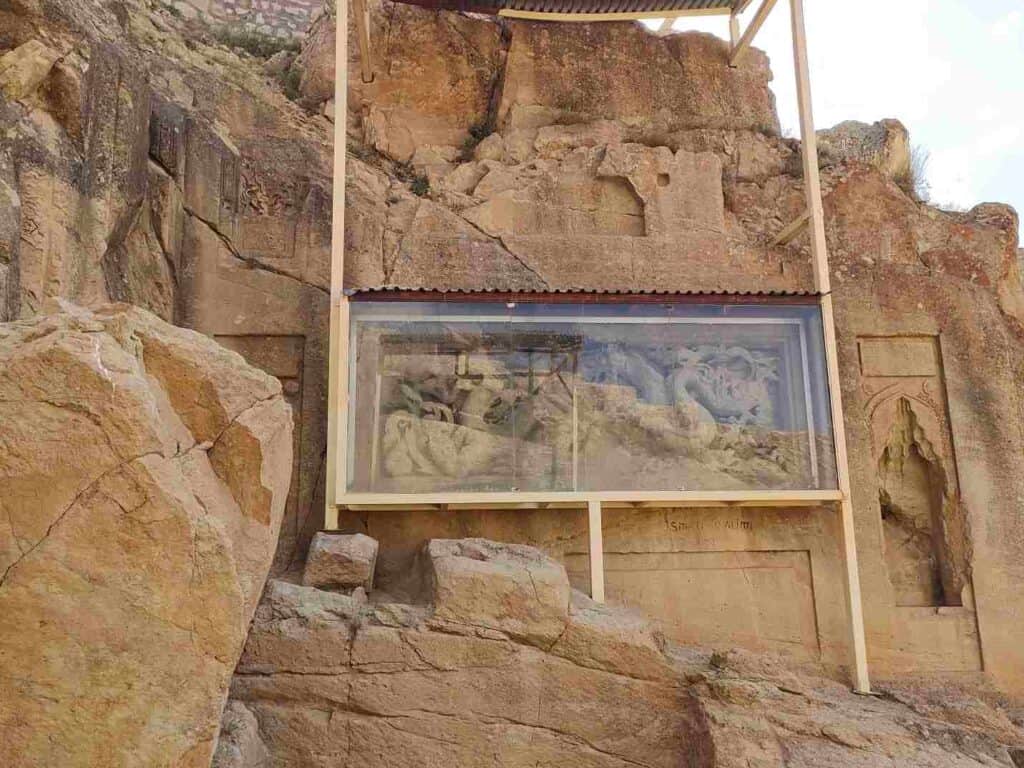
How to get to Dashkasan temple?
It is approximately 15 km from Soltaniyeh. The only way to get there is a private taxi.
Zanjan
Zanjan is the capital of Zanjan province. It is not the most attractive city in Iran, but still, there are a couple of places to visit, and this is your best option to stay for the night before heading further to the north of Iran.
A good thing about Zanjan is that its tourist attractions are within walking distance, and you can visit everything in a couple of hours.
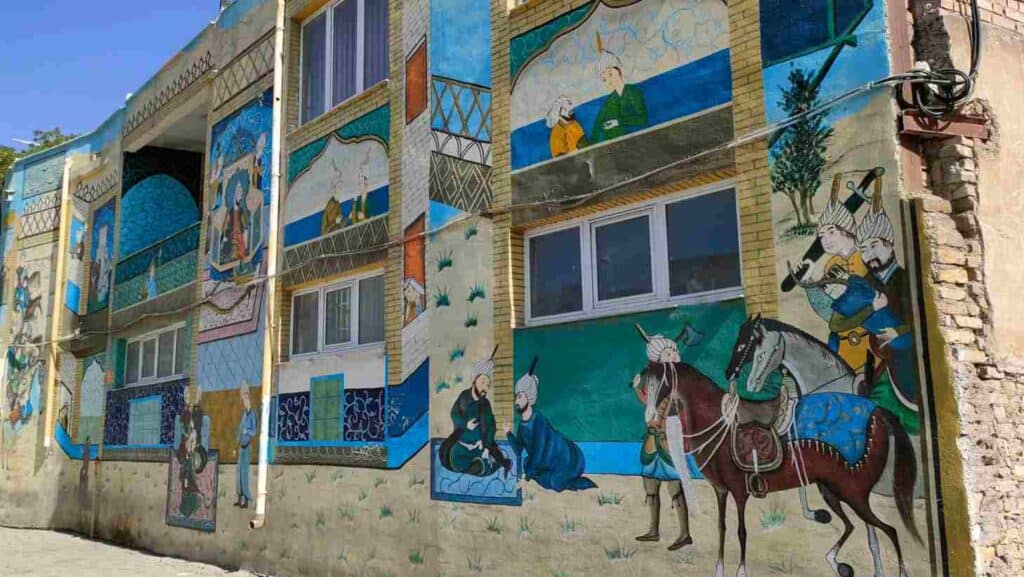
Zanjan Archaeology Museum (Saltman Museum)
The museum displays the mummies discovered in the Chehrabad Salt mine in 1993. Thanks to the dry air and salt, the corpses were conserved relatively intact for thousands of years, including hair, skins, and even some organs. It is the highlight of the museum. The bodies date back to different periods, some to the Achaemenid times (400 BC) and others to the Sassanid times (400-600 AC).
The mummies are one of the most important archeological discoveries in the world.
The museum is located in the attractive Zolfaghari historical house that was once the residence of the Zanjan ruler.
Entrance fee: 500 000 rials for foreigners
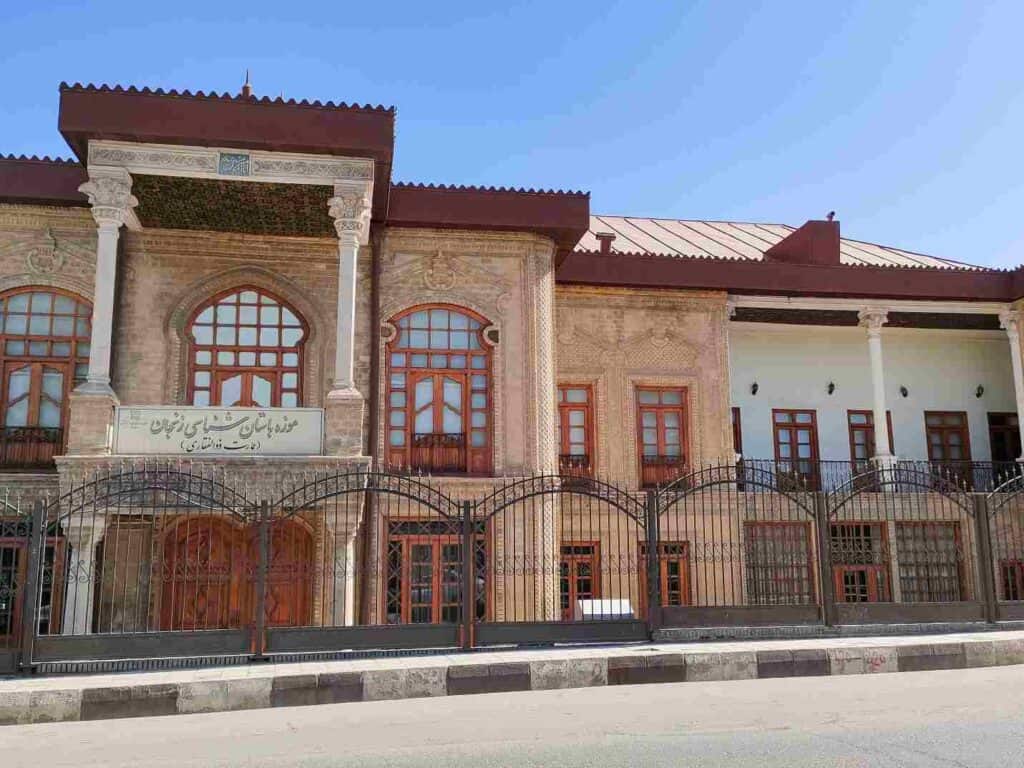
Mosques of Zanjan
The Jameh Mosque of Zanjan and the Hosseinieh Azam Zanjan Mosque are the most beautiful mosques in Zanjan.
Seyid Ebrahim Shrine (Imamzadeh)
Close to the Engalab square, the attractive Imamzadeh with the fantastic interior decoration of mirrors and colorful tiles is a must-see.
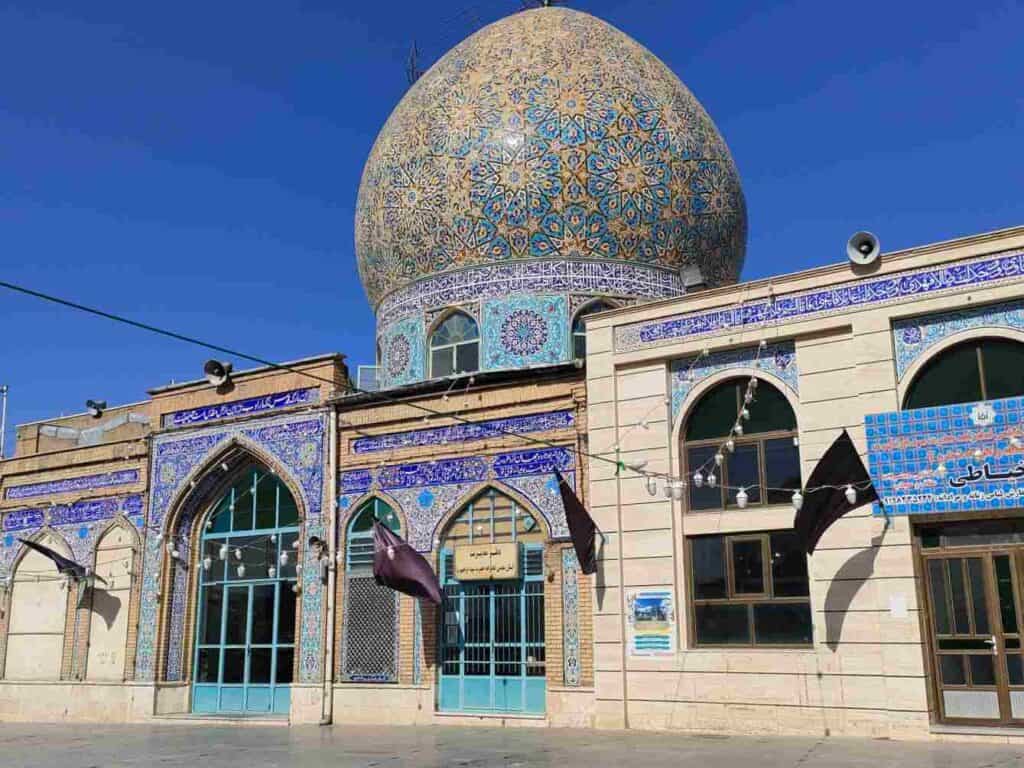
Zanjan Bazaar
It is far smaller than the one in Tabriz or Isfahan, but once you are in Zanjan, it is worth strolling around the historic brick-vaulted bazaar.
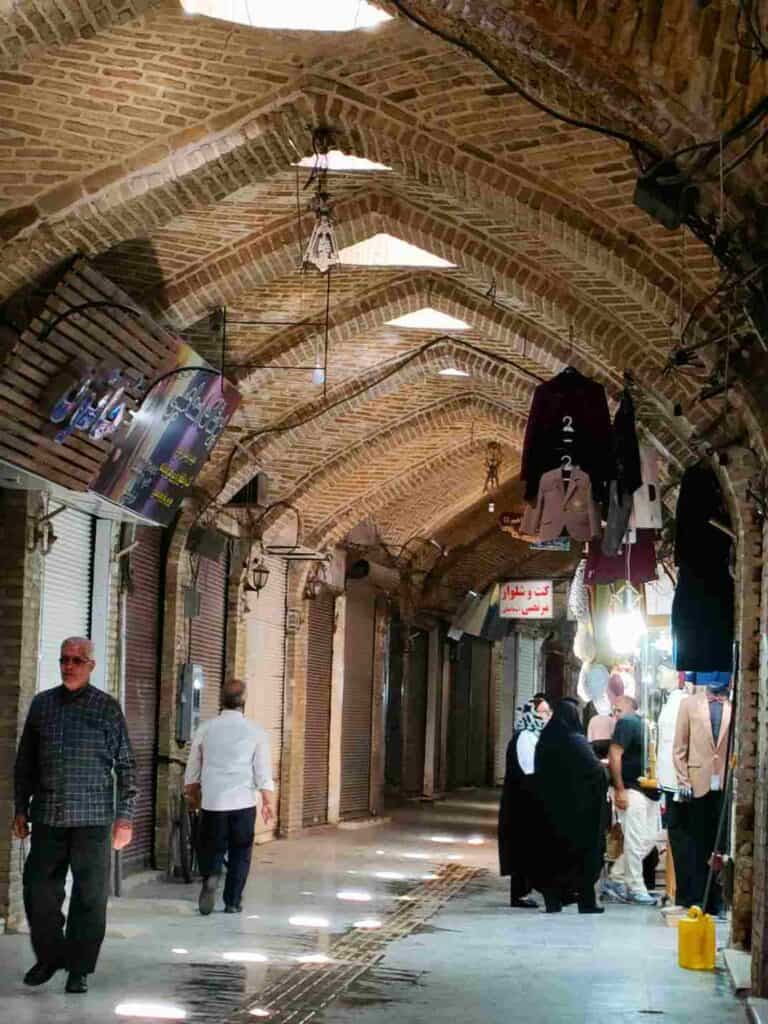
Museum Of Rakhatshorkhaneh (Anthropological Museum)
The museum is a traditional underground bathhouse from the 19th century where you can watch how women performed the activity before. There is a small bazaar in the alley right next to that, with plenty of attractive handicrafts and workshops.
Where to sleep in Zanjan?
Traditional Luxury Dadamaan Hotel: it is probably the best choice in Zanjan. The hotel is built in traditional style, with an inner courtyard and rooms arranged around it.
Tourist hotel Zanjan
Hostel Hafez: it is probably the cheapest option in Zanjan, right at the Enghalab square. There are rooms with private or shared bathrooms. A single/double room with a shared bathroom cost 1 million/1.5 million Rial.
Hotel Sepid: opposite the Hafez hostel, it is a nice hotel for 6 million Rial per night.
Saadi hotel: it is another budget option at a central location around Enghalab square with basic rooms. A single room/double room costs 1.1 million/2 million Rial.
1 night in Zanjan
Day 3: Zanjan, Behestan Castle, Takht-e Soleyman, Takab
Behestan Castle
The ruins of the unique Behestan castle are 120km northwest of Zanjan. The castle’s rooms, staircases, storehouses animal stalls are all carved with hand into sandstone. It is unclear which period it dates to, but it is presumed to have been constructed in the 11-13th century. Some say that it was a religious site during the pre-Islamic period.
How to get there?
Mahnesan is the closest city to the castle, 14 km from the fortress.
Savari (shared taxi) from Zanjan to Mahnesan: 600 000 rial
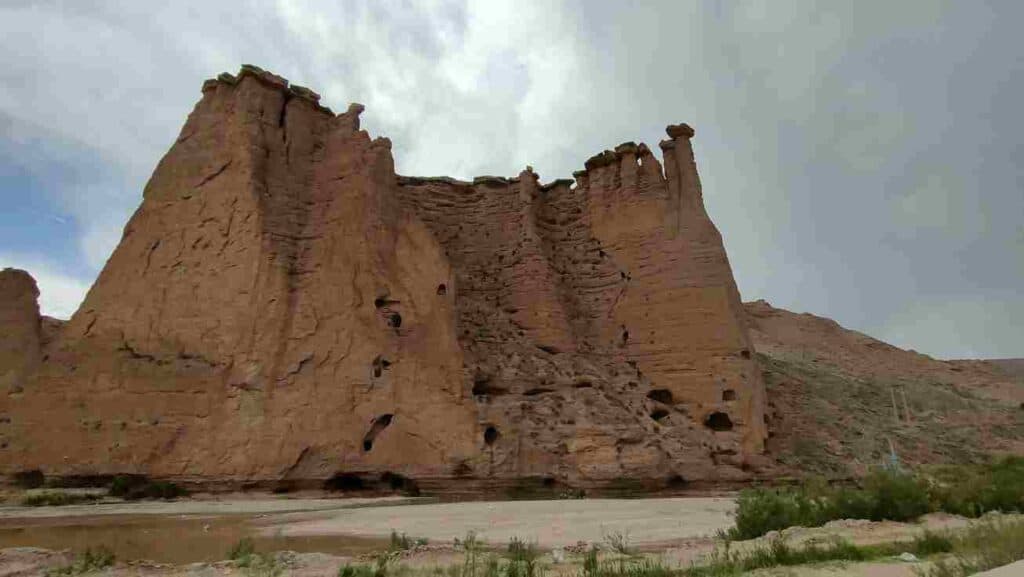
Takht-e Soleyman (The Throne of Solomon) Ruins
From the Behestan Castle, you can continue towards Takht-e Soleyman.
The complex of ruins around a crater lake with a depth of 12 m is still one of the most impressive attractions of western Iran in a stunning landscape.
Takht-e Soleyman was a spiritual and religious center during the Sassanian dynasty when Zoroastrianism was the state religion. The presence of water was essential in the pre-Islamic religion that respects the four elements of nature: wind, water, earth, and fire. They also say it is the birthplace of Prophet Zoroaster, the founder of the religion.
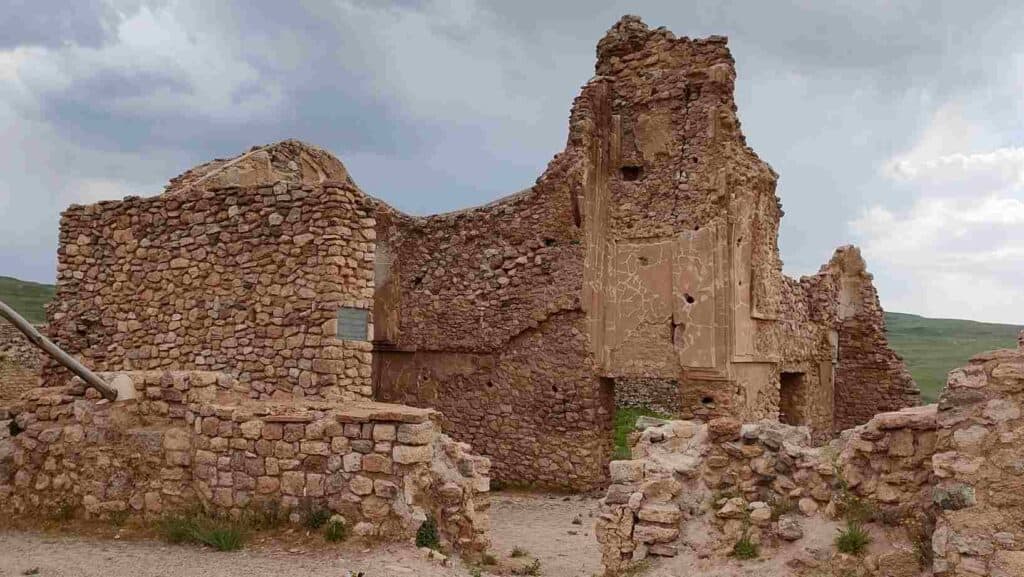
Every Zoroastrian religious place has a fire temple in the center. Inside, an eternal fire is burning, symbolizing the presence of Ahura Mazda, the principal God of the religion. The volcanic gas was channeled through ceramic pipes to the fire temple and is said to have existed for seven centuries. Later, during the Ilkhanid dynasty, in the 13-14th century, the rulers built their summer palace on top of the Sassanian fire temple ruins.
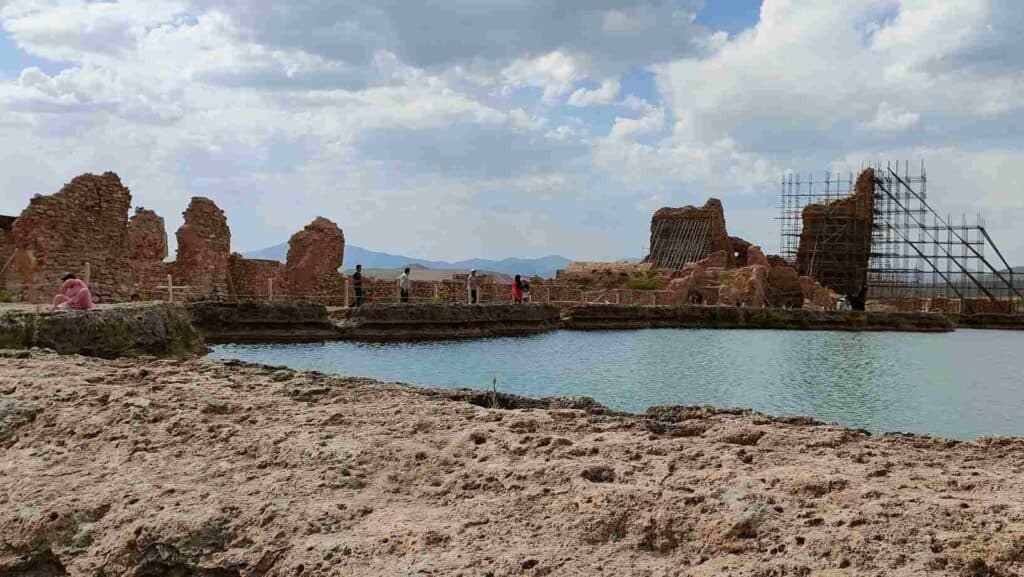
They also said that King Solomon used to imprison monsters inside a nearby 100-meter-deep crater called “Prison of Solomon” (Zendan-e Soleyman). This conical peak, only a few kilometers from Takht-e Soleyman, dominates the landscape and is seen far away. Climb to the edge of the crater and look down in the deepness.
If you want to know more about the Zoroastrian religion, read the article about Yazd, which is the center of the Zoroastrian community in Iran until now.
How to get there?
A private taxi from Mahnesan to Behestan castle and Takht-e Soleyman costs 4 million rials, with the driver waiting for you while visiting the Behestan castle. I continued with the same driver that took us in the shared taxi from Zanjan to Mahnesan.
Takab is the closest city, 35 km away, but you can also approach it from Zanjan.
You can make a day trip to Zanjan and Takht-e Soleyman and return to Zanjan, or you can stay for the night in Takab as I did.
There is no public transport between Takht-e Soleyman and Takab, which means you need to find someone on the spot who takes you to Takab.
Takab
Takab is not a very touristic place but it can be a good stop after visiting Takht-e Soleyman for the night before continuing to Tabriz if you decide not to return to Zanjan.
It is a small town with a beautiful landscape, where Tehrani people like chilling out. The Afshar people are the original inhabitants of Takab, who are part of the Oghuz Turkic people with Central Asian origins, but there are many Kurdish living there as well. Takab and Takht-e Soleyman are located in West Azerbaijan and speak mainly the Azeri language.
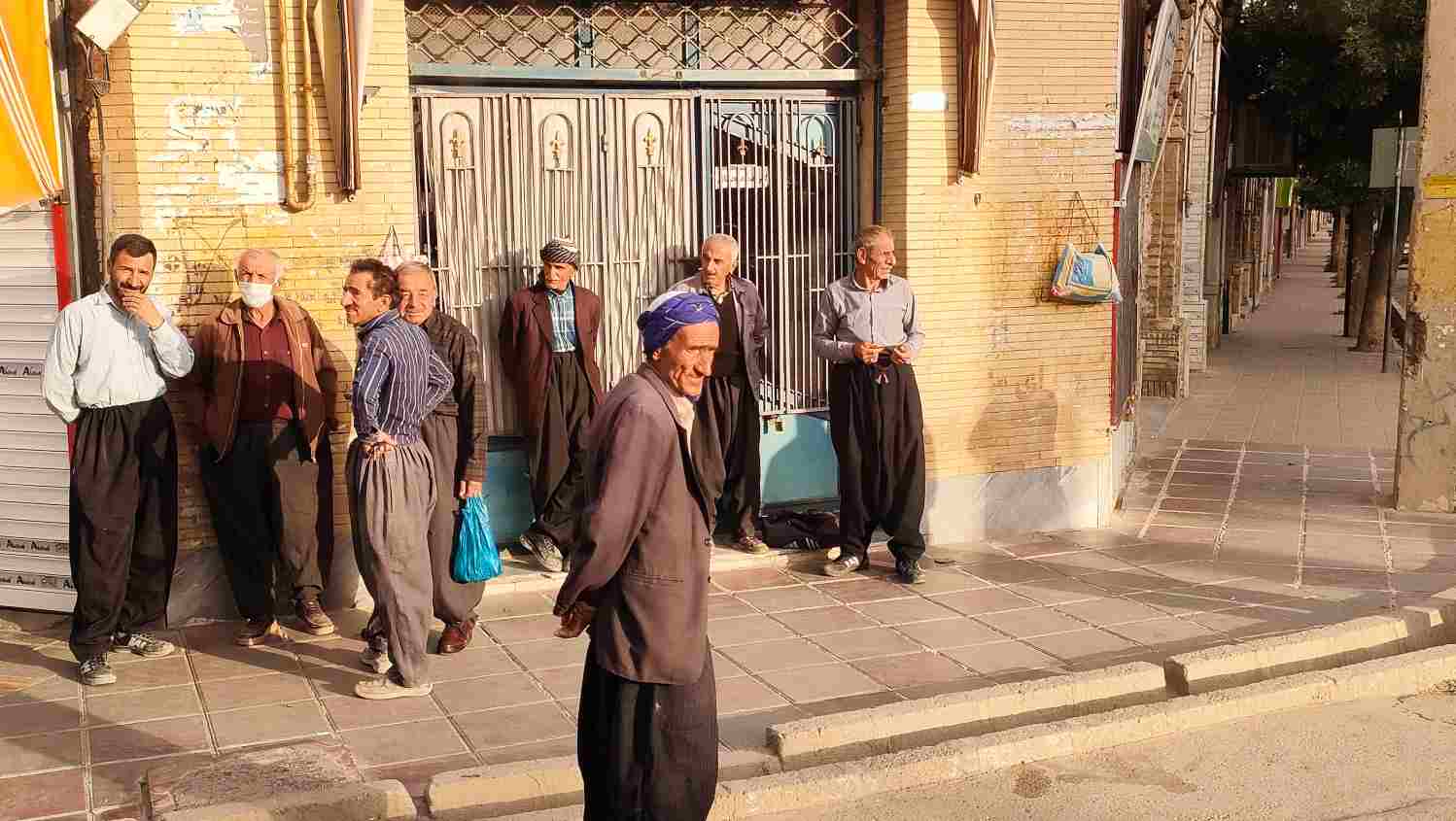
The entire West Azerbaijan province, especially Takab, is famous for its high-quality and durable handwoven carpets, also called iron ones. The rugs have 8-12 different colors, all extracted from natural plants and minerals.
In addition, Takab has the biggest gold mine in Iran and one of the biggest in the Middle East.
You can check out the unique Takab rugs and take the road up to the mountain, where locals often gather in the evening to enjoy the view. The main street of Takab has several restaurants.
Where to sleep in Takab?
There is only one hotel in the city, Hotel Ranji, which is clean and tidy. A private room with a bathroom costs 3 million rials. The hotel receptionist speaks fluent English, and you can get all the information from him. He arranged for me that the driver stops in front of the hotel to pick me up at 7 am to continue to Tabriz.
How to get from Takab to Tabriz?
It is slightly more complicated to go from Takab to Tabriz as there is no direct bus or shared taxi, so you can get there in three stages unless you make it easier with a private taxi.
– First, you have to take the minibus from Takab to Bukan (3 hours, 300 000 rials)
– Then another shared taxi from Bukan to Qoshachay (1 and a half hours, 300 000 rials)
– Finally, a shared taxi from Qoshachay to Tabriz (3 hours, 1 050 000 Rial)
How to plan your trip to Iran
Book your flight to Iran: I always use Google Flights, Skyscanner or Wayaway to find the cheapest flight tickets worldwide. To get an extra 10% for your Wayaway Membership Plus program use my discount code VOG
Important: Booking.com and other common platforms do not work due to international restrictions in Iran. The only exemption is Skyscanner, where you can book both your international flight and accommodation in Iran!
Book your accommodation in Iran: Hostelworld.com offers a limited number of hostels. All other services are only available through local travel agencies, like 1st Quest.
Get your visa to Iran: 1st Quest or Tap Persia local companies can easily arrange your insurance for Iran
Book domestic flights, hotels, transfers, bus and train tickets, and local tours, all in one place via 1st Quest travel agency.
Another good thing is that by using my discount code, you get an extra 5% off your bookings: VOG%1stQ
Virtual Private Network (VPN): Use VPNExpress, the fastest and best Virtual Private Network to get access to blocked sites in Iran and to prevent hackers from stealing your private information.
Insurance to Iran: 1st Quest or Tap Persia local companies can arrange for you visa to Iran
Book local guides and local tours: Pirsik is specialized in offering tour guides and local tours in less touristic countries, including Iran.
My trip evolved quite spontaneously at this point. To spare time, I got off on the way to Tabriz at the junction where the road goes to Kandovan, in the town of Osku. Here I met a nice Iranian family whom I joined to visit Kandovan. I even returned with them to their home in Urmia, which was not in my original plan, as the guidebook said it was not worth taking an extra trip to Urmia. Well, I don’t agree! Although the city does not have many attractions, it has a different atmosphere from Tabriz, and I really didn’t regret going there.
Passing by the once much more expansive Urmia Lake and observing the sunset at the coast of it, putting my feet in its water, was one of the best things to do in northern Iran.
Long story short, based on my experience, I recommend having a direct bus from Takab to Urmia. Ask on the spot the day before about the time of departure. It should be a 5 hours’ drive.
1 night in Takab
Day 4: Urmia city, Urmia lake and the Shahar Chay dam
Urmia gives the impression of a modern city with high residential buildings. Since it is surrounded by mountains, within a short time, you can escape to nature and have a great view. Urmia was called Rezaiyeh earlier after Reza Shah, but it was changed after the revolution. Urmia is a multicultural city, but most people are Kurds and Turks (Azeris), while the people in Tabriz are almost entirely Turks (Azeris). There is a significant Armenian community as well, so you can also find some Christian churches.
People in Urmia have a reputation for being extremely friendly, and this was my experience as well. Despite not having great tourist attractions, I enjoyed my stay in Urmia due to its pleasant vibe, and it seems to be a good place to live.
The most important place to visit is Lake Urmia
The Urmia Salt Lake was once the biggest in the Middle East, with a surface area of approximately 5,200 km2, a length of 140 km, a width of 55 km, and a maximum depth of 16 meters. By now, the lake shrank to 5-10% of its original size, and where once boats were transporting the passengers has become an arid deserted area.
Not long ago, there was a rich fauna at the lake: pelicans, spoonbills, ibises, storks, shelducks, avocets, stilts, and gulls.
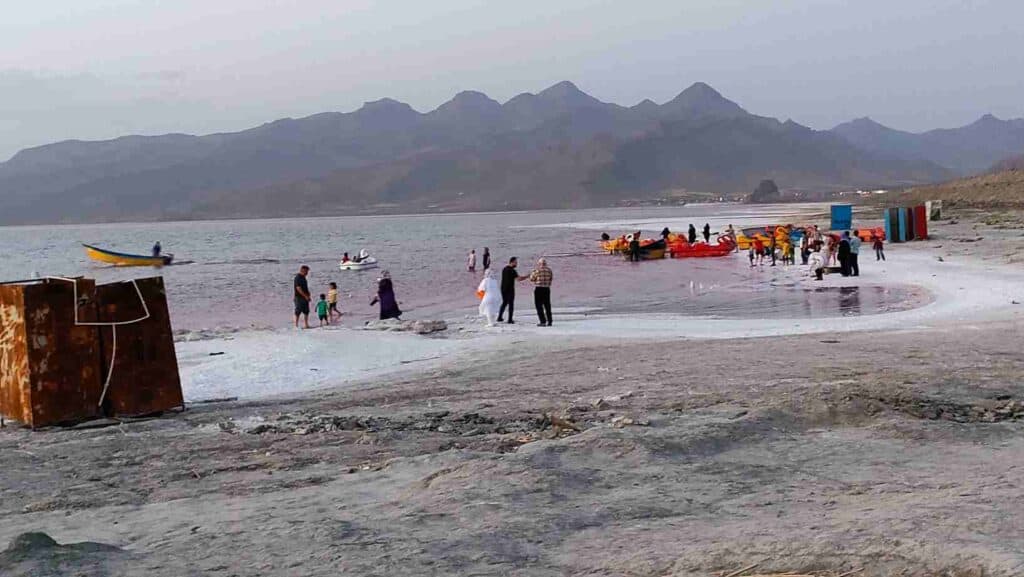
The lake’s retreat happened at an alarming speed, and its fate became labeled as one of the biggest environmental tragedies of the 20th century. There is a real fear that Urmia Lake can completely dry up as Aral lake did.
The bridge with a highway has linked the two big cities, Urmia and Tabriz, crossing the lake and cutting it into two parts since 2008. You will take this road when you continue to Tabriz.
What caused the tragedy of Urmia Lake?
After the Islamic Revolution, the government pushed families to get more children. The rapidly growing population needed more jobs, and agriculture seemed to be the best option to absorb the workforce. The size of agricultural lands expanded around the lake while cities and villages grew.
Agriculture needed more and more water, so they started to use groundwater to make up for the lack of rain. With the decreasing water level, the lake became saltier, and the main river, the Zarrinehrud that feeds the Urmia Lake, was also diverted. Similar to the Dead Sea, you can only float on the surface.
The shrinking water had several impacts. Flora and fauna disappeared, and the once-popular lakeside holiday resorts became ghost towns. Due to high salinity, the lake no longer sustains any fish species.
There are currently efforts to reverse the procedure, and hopefully, they can prevent Urmia Lake from drying up and even increasing its water level.
What to visit in Urmia?
Maar Sargiz Church
On the hillside of the Sir Mountain, just outside Urmia, you find some of the finest Armenian churches, the most famous of which is the Maar Sargiz church. It was built by Sirin, the wife of King Khosrow Parwiz in the Sassanid era, who was a Christian follower, and is now an important pilgrimage site for Assyrian Christians.
From here, you can have a nice view of the city.
Shahar Chay dam
Outside Urmia (20 minutes’ drive), you get to the Shahar Chay dam with a turquoise color lake, one of the most beautiful places in northern Iran. There are several places to stop for a fantastic view. If you have more time, you can drive around the whole lake.
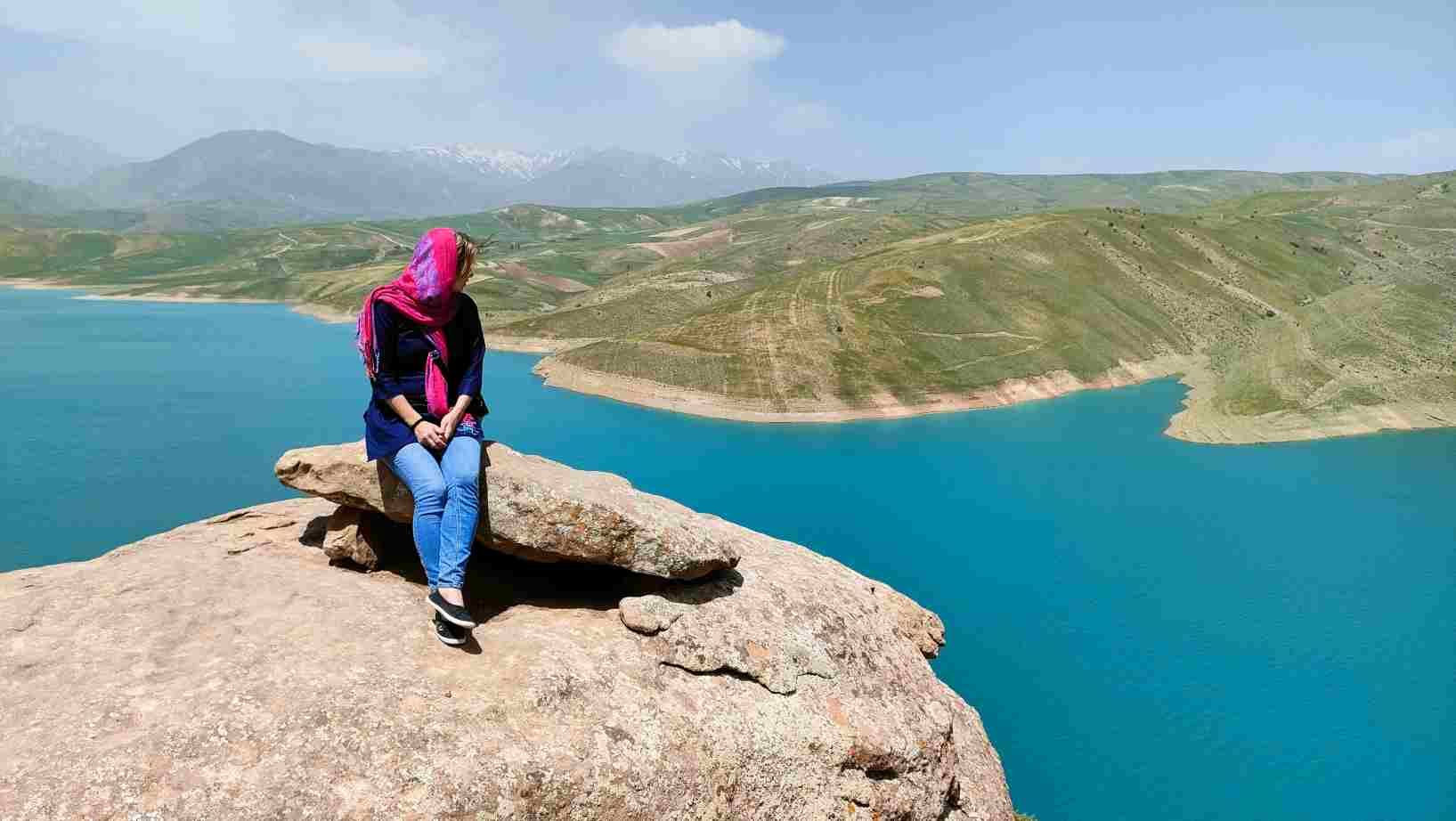
Mulberry gardens in June
If you are in Urmia in June, you can go to one of the private mulberry gardens in the city.
Segonbad
The impressive bastion-shaped tomb from the Seljuk times (12-13th century) is one of Urmia’s most important historical attractions. The tomb was built of stone and brick with Kufic inscriptions inside, while the portal has decorative muqarnas, a typical element of Islamic architecture. The mausoleum is in the center of the city in the middle of a park with several other graves.
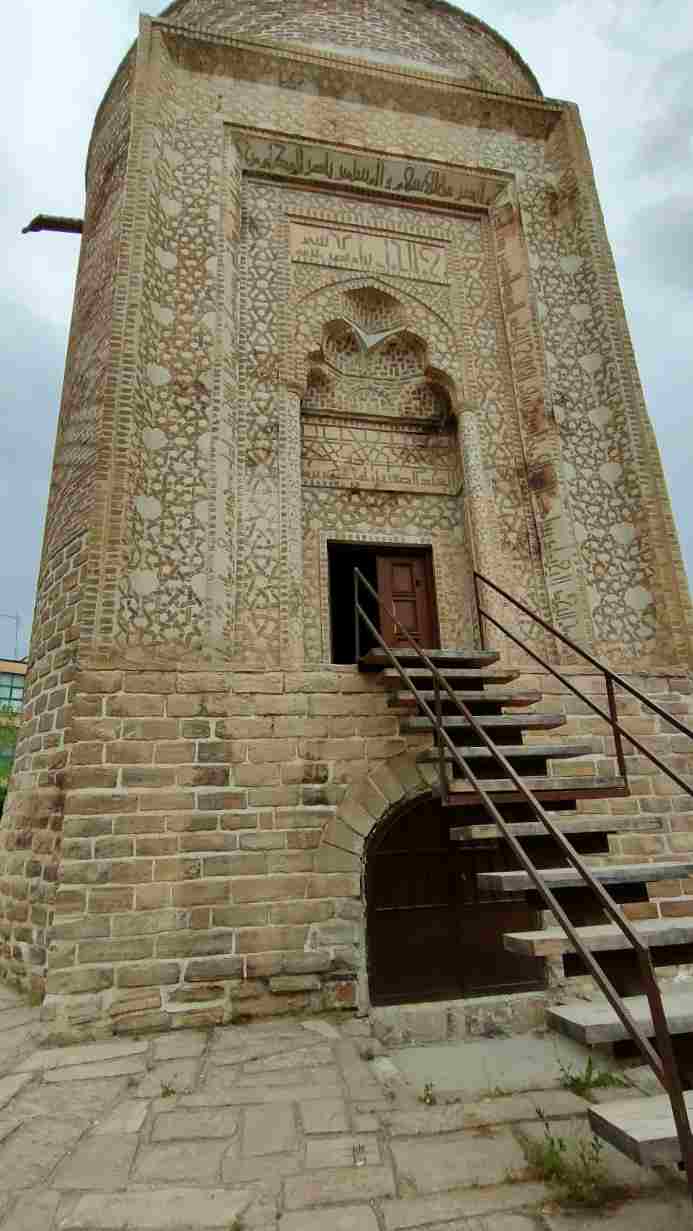
Orumiyeh historical bazaar
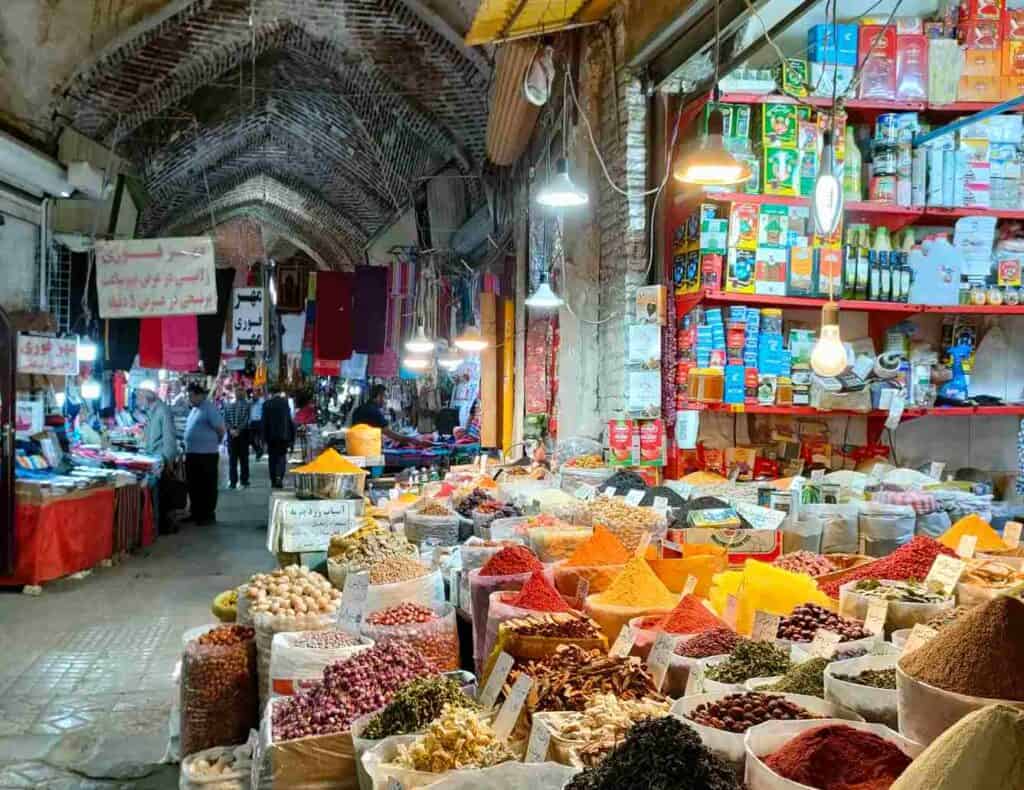
St. Mary Church
It is a famous church in downtown Khayam street, but it was closed during my visit.
Urmia Jame mosque
Also called Rezayieh mosque, it is an impressive non-functional mosque from the 13th century dating back to the lkhanite era. It was probably a fire temple before the Islamic period.
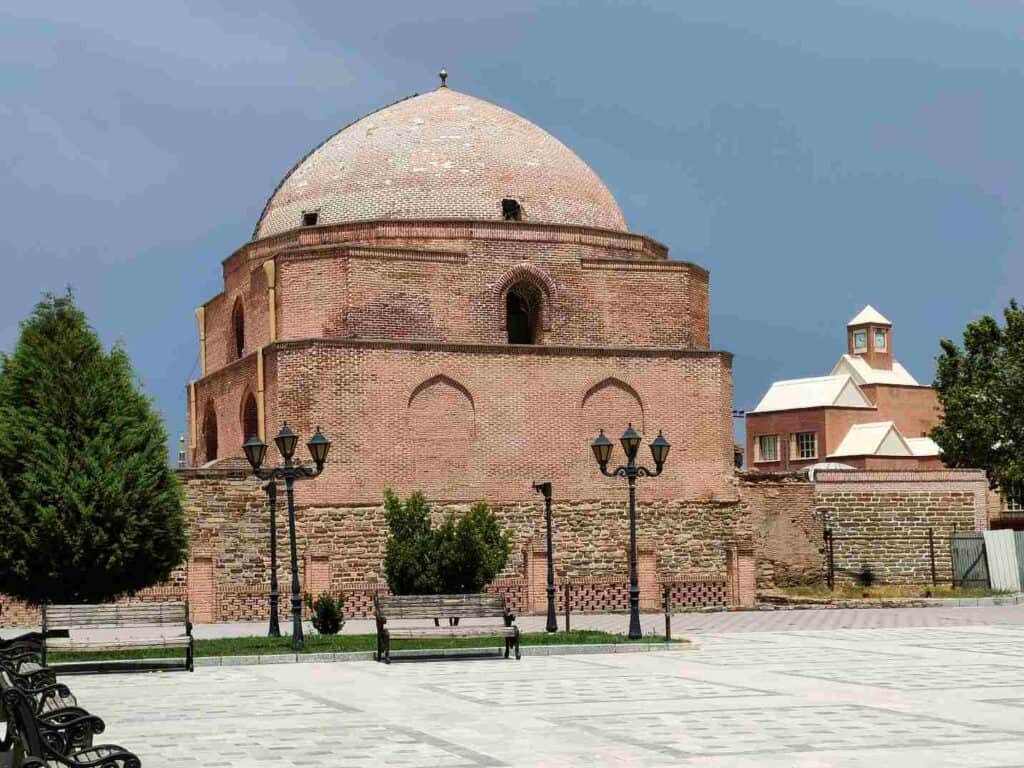
Yeraalma-Yomurta (egg potato) is the famous fast food of Urmia that you must taste.
It is a wrap with potatoes, eggs, and green vegetables. There is an entire street, Mokhaberat street, with shops only selling this for over 50 years. Tabriz also sells this wrap, but the two are different. In Urmia, they boil the potato embedded in hot salt. However, I also liked the one in Tabriz as they added tomato as well to that.
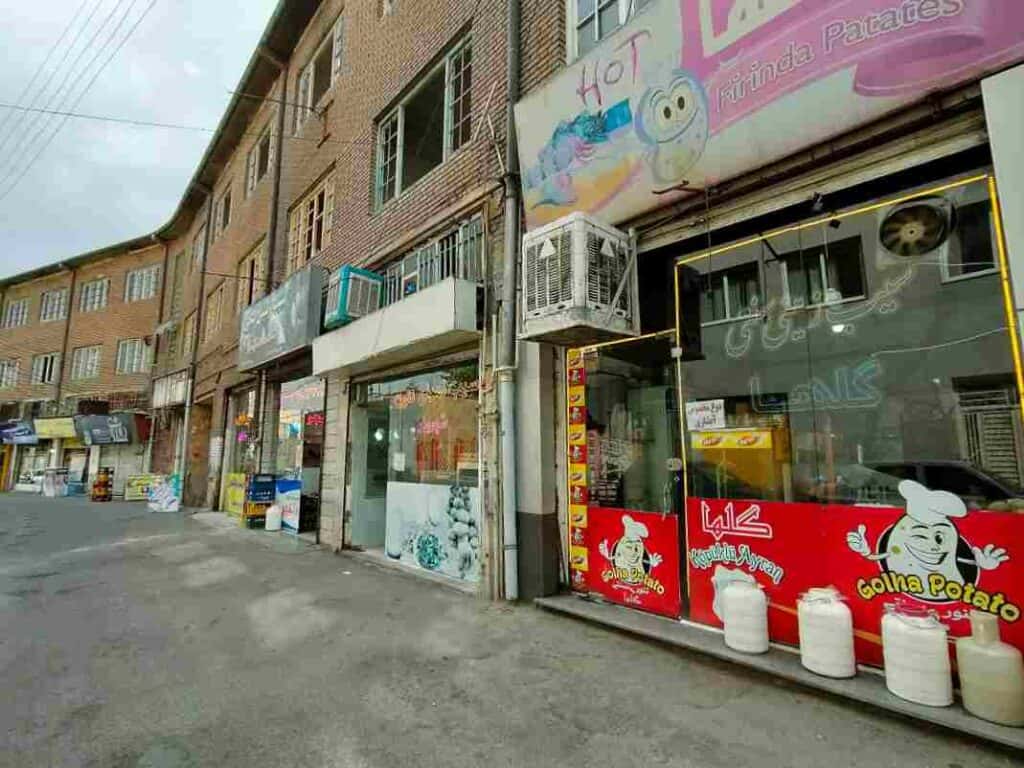
There are two famous sweets in Urmia:
Noghl: sugarcoated almonds are often eaten along with tea
Halva havij and halva gerdo: a sweet paste made of flour and butter mixed with a syrup of sugar and saffron.
You can find the best local sweets in the sweet shop near Segonbad, Homa Noghl.
Where to sleep in Urmia?
Ana hotel (5 star)
Aria International hotel (5 star)
Urmia Park hotel (4 star)
2 nights in Urmia
Day 4: Kandovan/Tabriz
Go from Urmia to Tabriz/Kandovan.
There are several buses between Urmia and Tabriz, which takes 2 hours to get there. If you want to save time, you can get off at the junction at Osku, and from Osku, find a shared or private taxi to Kandovan. Otherwise, you go first to Tabriz and then take a shared taxi to Kandovan. However, as mentioned above, long distances in Iran can be tiring, so try to save your energy and time if possible.
Kandovan is one of the most famous villages in Iran that looks like a fairy tale. It lies 50 km south of Tabriz in East Azerbaijan at the foot of Mount Sahand (3707m) near the city, Osku. The volcanic ashes of Mount Sahand hardened and formed unique forms of tuffs in the region.
Book your local tour to Kandovan
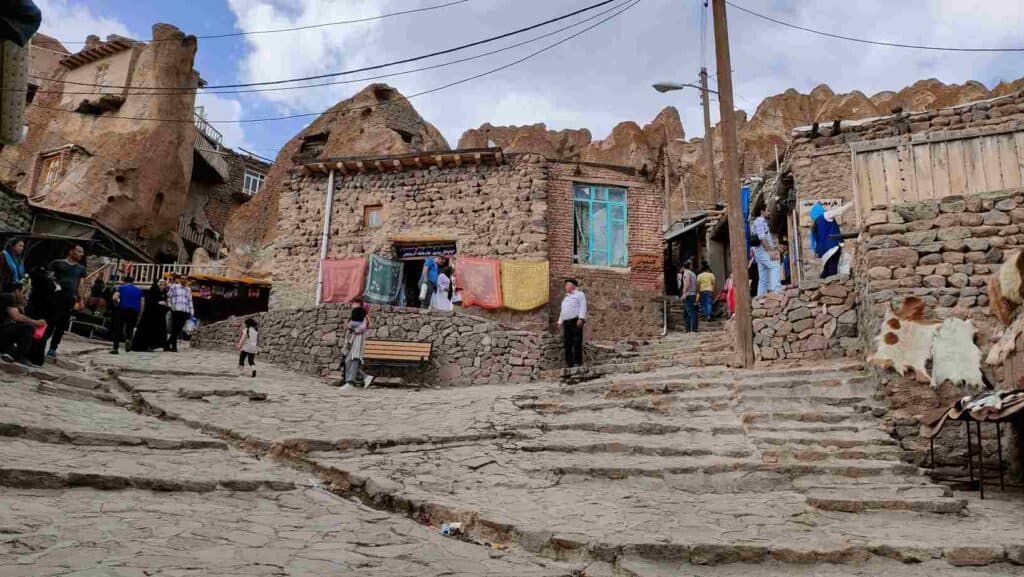
Tabriz is the most famous city in northern Iran, with the biggest bazaar and several museums.
You cannot visit everything in Tabriz in an afternoon; however, you can cover, for example, the following places: Nikdel and Haidarzadeh historical houses, the Architecture Faculty of the Islamic Arts University, the Municipality Palace Museum, the Blue Mosque, and Azerbaijan museum, and finish the day at Elgoli (Shahgoli) park.
2 nights in Tabriz
Day 5: Rainbow mountains and Babak fort
Have a day trip to the Babak fort and visit the rainbow mountains on the way.
So-called rainbow mountains are found at more locations in Iran, but the one along the road between Zanjan and Tabriz and the other one along the road from Tabriz to Babak fort are the two most famous. These are impressive colorful mountains, although the colors are not as sharp as you find on the internet.
Hiking to the Babak fort takes one hour.
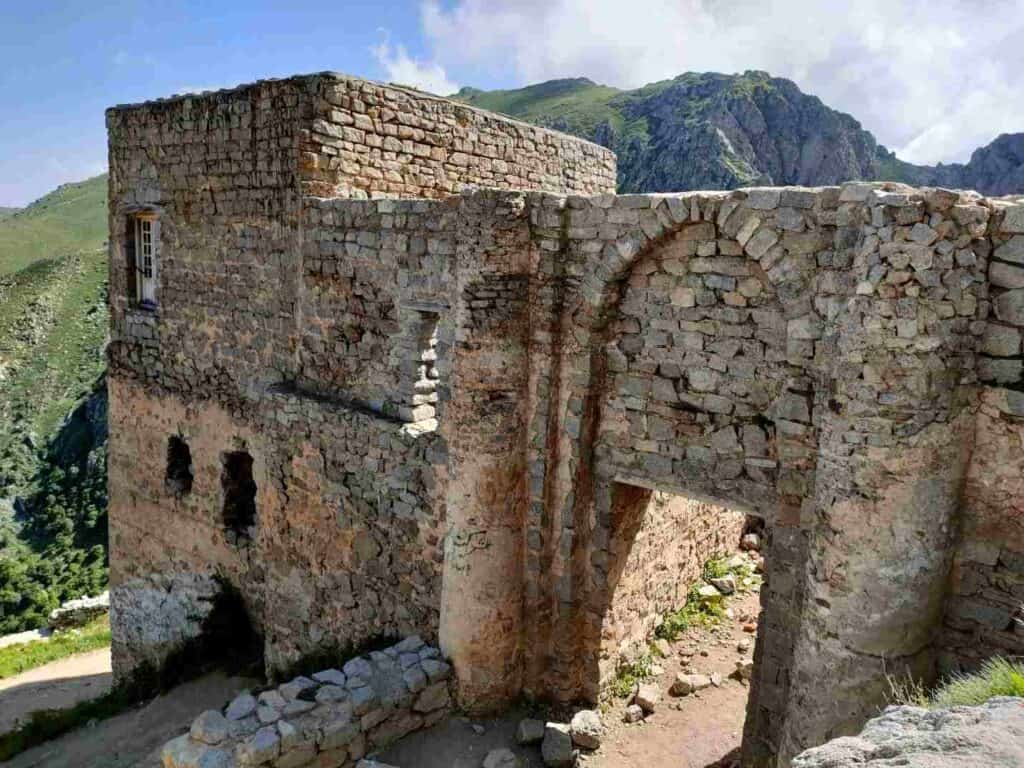
Hiking up to the Babak fort is the best day trip from Tabriz. On the way, you pass by the “rainbow mountains”. To avoid disappointment, I must mention that the colors are far less striking than in the photos on the internet, but they are unique. If you want to get closer to the mountains, climb up to get a closer view, you need to get a private taxi. Otherwise, you will see them from the highway if you take a shared taxi.
The castle, built during the Sassanid times in the 9th century, got its name after Babak Khorramdin, an Iranian warlord who fought the armies of the Arab Abbasid Caliphate and protected the Persian traditions, language, and culture. He built the fort on the top of the mountain to make it unconquerable.
For that, he is a highly respected person in Persian history. After 22 years, he could no longer resist and was executed. Every year the 10th of July is the day of Babak, who many Iranians and especially Azeris consider a national hero.
How to get to Babak with public transport?
You can get to the Babak Fort in two steps. First, you must take a shared taxi to Ahar and then to Kaleybar. From there, you will find a taxi to take you to the foot of the mountain, where the hiking trail starts towards the fort, from where you have a fantastic view after an hour’s walk. On the way, there is a small stall selling drinks; on the top, you can fill your bottle with water.
On the way back you can choose the same way, however, in the afternoon a shared taxi may fill up slowlier. Although I had to wait almost an hour, on the way back, there was a shared taxi directly from Kaleybar to Tabriz.
Terminal (darwaz) – Ahar: 450 000 rial
Ahar- Kaleybar: 350 000 Rial
Taxi to where the hiking path starts to Babak: 500 000 Rial
Day 6: Tabriz, Ardabil
In the morning, finish your sightseeing in Tabriz. If you followed the above itinerary, head to Arg-e Tabriz, Poets’ mausoleum, Qajar Museum, the historical Bazaar, Jameh Mosque, and check out the wide range of Persian sweets in Tesaj confectionary.
After that, take a bus from the Tabriz bus terminal to Ardabil (4 hours). You will arrive in the evening.
There are three Armenian Christian churches with breathtaking locations scattered around West and East Azerbaijan provinces further to the north: Qareh Kalisha (St. Taddeus Chruch), Chapel Dzordzo in West Azerbaijan, and Monastery of Saint Stephanos in East Azerbaijan. They are quite remotely located from other tourist attractions and require much more time to get there, so I did not include them in my program. However, if you are interested, head to the north from Urmia or Tabriz to access these places. You can easily have these places when you continue towards Armenia.
Sheikh Safi-od-Din Mausoleum
By far, the most important attraction of Ardabil is the Sheikh Safi-od-Din Mausoleum, built between the 16th-18th century.
Sheikh Safi was a prominent leader of the Islamic Sufi order, founded earlier by the Safavid dynasty. The tomb is part of a complex with a mosque, library, cistern, hospital, kitchen, offices and courtyards.
The Sufi master was born in Ardabil, where he founded his Khanqah (spiritual retreat) as his home to teach students. After his death, his mausoleum became a sacred place during the Safavid dynasty. He was the ancestor of Shah Ismail I, who founded the Safavid dynasty (1501- 1722).
The tomb is a 17-meter-high circular tower covered with blue tiles. The complex includes a Porcelain Museum where the sanctuary’s ceremonial objects are displayed.
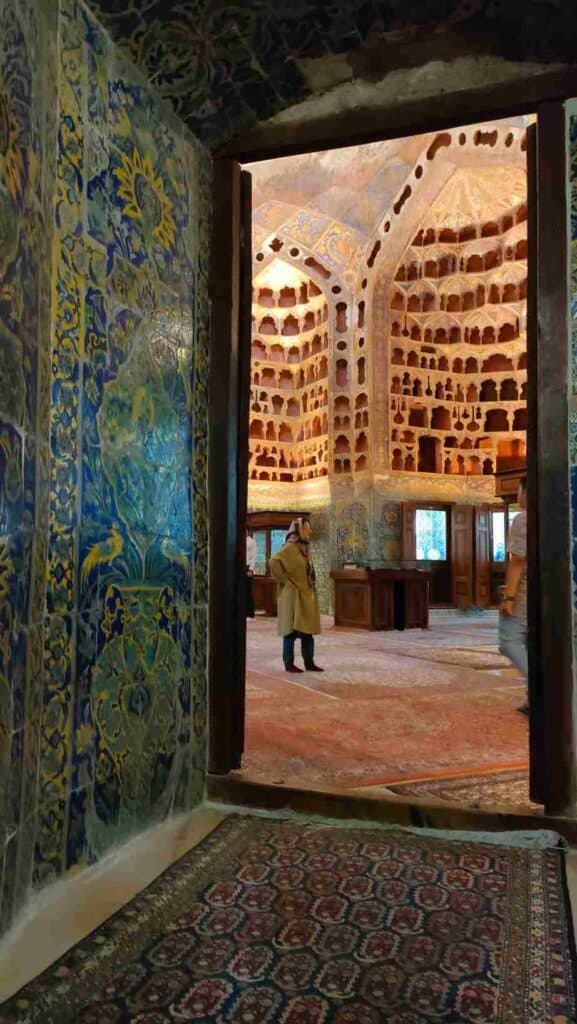
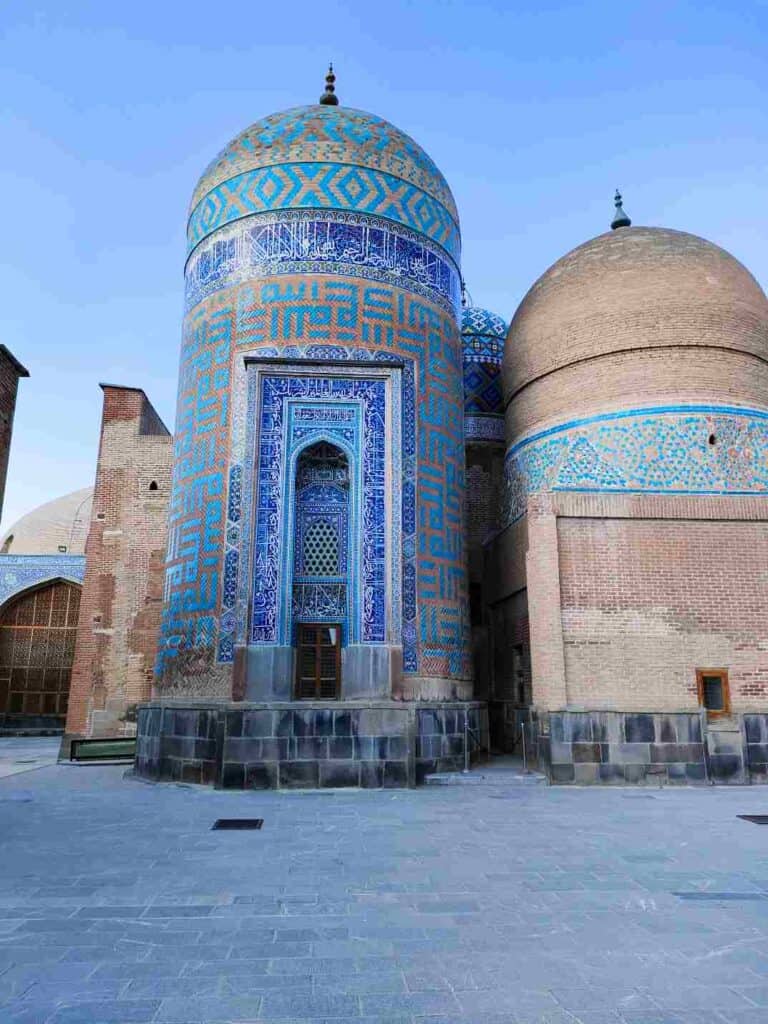
The mausoleum was built based on Sufi symbols. The shrine of the sheikh is divided into seven segments referring to the seven stages of Sufi mysticism. Besides, other parts are divided into eight parts symbolizing the eight attitudes of Sufism.
Other parts of the mausoleum are Ghabdil Kaheh (lantern house), Chini Khaneh (china room) with beautiful stuccos, and wooden and silver doors.
The mausoleum’s interior is of great artistic value with colorful tiles, the work of the greatest calligraphers of the Safavid era, wood carvings, goldsmithing, and paintings.
Entrance fee: 1 500 000 Rial
Other attractions of Ardebil
Jomeh mosque of Ardebil
The Friday Mosque of Ardabil is one of the oldest and largest mosques in Iran, built on top of a former fire temple, but it is not in the best state anymore. The original mosque was built in the Seljuk times but was largely destroyed during the Mongol invasion. The mosque remained active till the Safavid period in the 16th century.
It has an extensive network of underground corridors with vaulted arcades. The mosque’s interior has some precious tilework, stucco, and painting decoration.
The alone-standing brick minaret is much thicker than usual and was built in a cylinder shape. The minaret’s upper part collapsed and is now a fraction of the original.
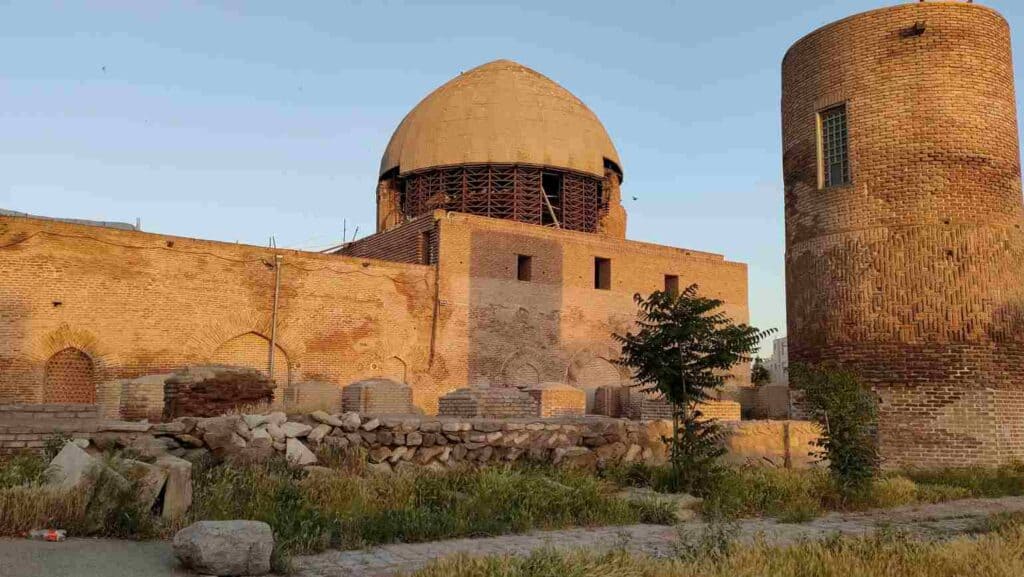
Bazaar of Ardebil: visit the small historical bazaar of Ardabil
The Sareyn hot springs are only 40 km from Ardebil, with several spa centers built on them. It makes a perfect day trip in beautiful surroundings near the Sabalan Mountains if you like something like that. The almost 120 springs are rich in minerals, making it the touristic and medical center of Iran.
Where to sleep in Ardebil?
Hotel Negin: a mid-category hotel with rooms for 20 dollars.
Hotel Sabalan (3 star)
Hotel Shorabin (2 star)
Hostel Sevin: a budget hostel 50 meters from hotel Negin on the other side of the road for 2 million Rial per night.
1 night in Ardebil
Day 7: Rasht, Masuleh
Go from Ardabil to Rasht and then continue to Masuleh on this day.
Another slower option is to go first to Astara at the Caspian Sea, cross the mountains, and ascend to the sea with a lovely landscape. Here you can take another shared taxi to Rasht along the Caspian Sea. Astara has little to offer, so you can continue directly to Rasht. I did it this way, although the scenery was nice but not breathtaking if you are used to the mountain scenery. To save time, I think you should take a shared taxi directly from Ardabil to Rasht.
Rasht is the capital of Gilan province, one of the most beautiful places in Iran with its extensive green landscape. The tropical forest covering the mountains makes you feel like being in Southeast Asia, and you get surprised that Iran also has this type of scenery.
Gilan has three famous sweets that you can try in one of the sweet shops of the main square in Fuman: Fuman cookie, Reshteh Khoskar (it has to be fried at home), and Halva-e Ziyabari.
What to visit in Rasht?
Shahrdari Square Complex
The Shahrdari Square Complex is Rasht’s most famous landmark, incorporating the old post office, Municipality building, and City Hall. It was built in the 1940s in Russian style. The best time to go there is in the evening when it gets illuminated, and the square around turns into the hub of nightlife with food stalls and many people strolling around.
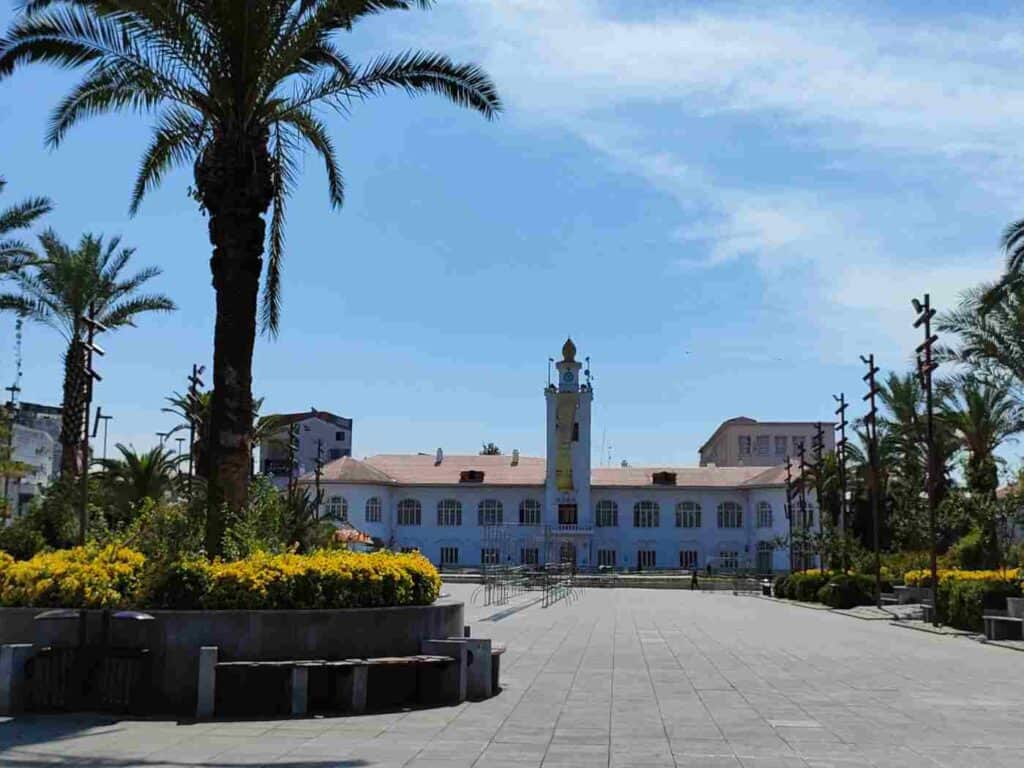
Rasht Grand Bazaar
Another famous sight of Rasht is the Rasht Grand Bazaar. Bazaars are still the most preferred places for shopping for Iranians. Unlike other traditional bazaars in Iran, it is not a covered brick structure. However, it is probably the liveliest in Iran, where they sell a wide range of fresh vegetables, fruit, fish and seafood, dairy products and handicrafts. The climate of Rasht at the Caspian Sea is ideal for cultivation.
Gilan Rural Heritage Museum
It is the biggest eco-museum in the Middle East that welcomes visitors since 2005.
It is located 35 km from the city center in a peaceful forest area. They established traditional houses that reflect the culture of the nine villages of Gilan. The museum’s purpose is to show how people lived in the past, including traditional attires and tools, and to present old traditions. Even rice fields and tea farms have been reconstructed to present the typical agricultural activity in the region.
It is also a good opportunity to taste the freshly made traditional bread, cheese, sweets and tea of the region.
Rasht archeological museum
Since there is no inscription in English about the displayed archeological collection, it is hard to value the exposition that only consists of some rooms. When I was there, the museum was under extension. Maybe when the work gets finished, it will be worth the price. Otherwise, in its current form, it is less interesting for a foreign visitor.
Entrance fee: 500 000 Rial
From Rasht, you can travel to the oldest and biggest port of the Caspian Sea, Bandar-e Anzali. Near the port city lies the Anzali Lagoon, one of the few wetlands listed by the Ramsar Convention of 1975 of international significance. Besides being the rainiest part of Iran, it is probably the best place for birdwatching and an important habitat for migratory birds in winter, including pelicans and flamingos. The best way to discover its flora and fauna is to take a boat. During summer, blossoming lotus flowers and water lilies cover the water surface, making it the best time to visit.
Masuleh – the stepped village in Gilan
You can also visit Masuleh and the Rudhkan castle on a day trip from Rasht, but it is even a better to spend one night in Masuleh. If you include the Gilan Rural Heritage Museum in your program, then you should stay for the night in Rasht and visit Masuleh and the Rudhkan castle on a day trip.
Passing by terraced rice fields and forests, you reach the stepped village of Masuleh, located 1000 meters above sea level, in the Gilan province of northern Iran. Masuleh is not the only one but one of the most beautiful stepped villages in Iran that you must include in your north Iran itienary. It means that it was built against the slope of the mountain on a natural rock base. There are 120 meters between the highest and lowest part of the place. Even more surprising that no experienced architects but locals constructed it.
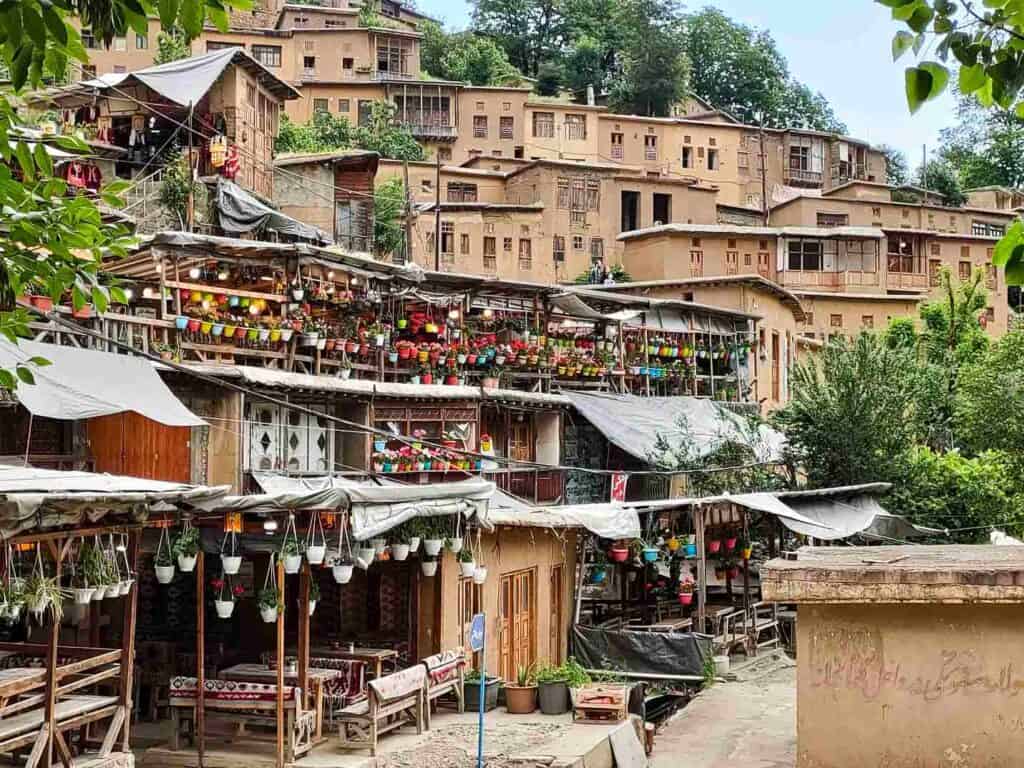
The roof of one house is the courtyard of another house. At the same time, it serves as a street or meeting place. The residents gave their permission that the roof could be both an alley and a public meeting spot. That means that when you walk the streets of Masuleh, you walk on top of another house. Narrow staircases and ramps connect each level. They built the houses so densely next to and above each other that there was no space left for wider roads, making Masuleh the only Iranian settlement without any cars or other vehicles, apart from wheelbarrows.
Most houses have two floors. In Masouleh, it is an old tradition to build houses out of stone, brick, wooden beams, and wild ferns. The walls are plastered annually with yellow mud, and the roofs with red clay, which they collect from the riverbank. Thus, they are well visible even in the thick fog that often covers the town.
The bazaar in the center of the village is the liveliest part, where you can buy the famous Masuleh wool doll, colorful handmade stockings, and many other things. Most people live from tourism: they work as tour guides, offer accommodation, and run a restaurant. Women make local handicrafts. People here speak the “Taleshi” language, which is barely understood by those who speak Persian.
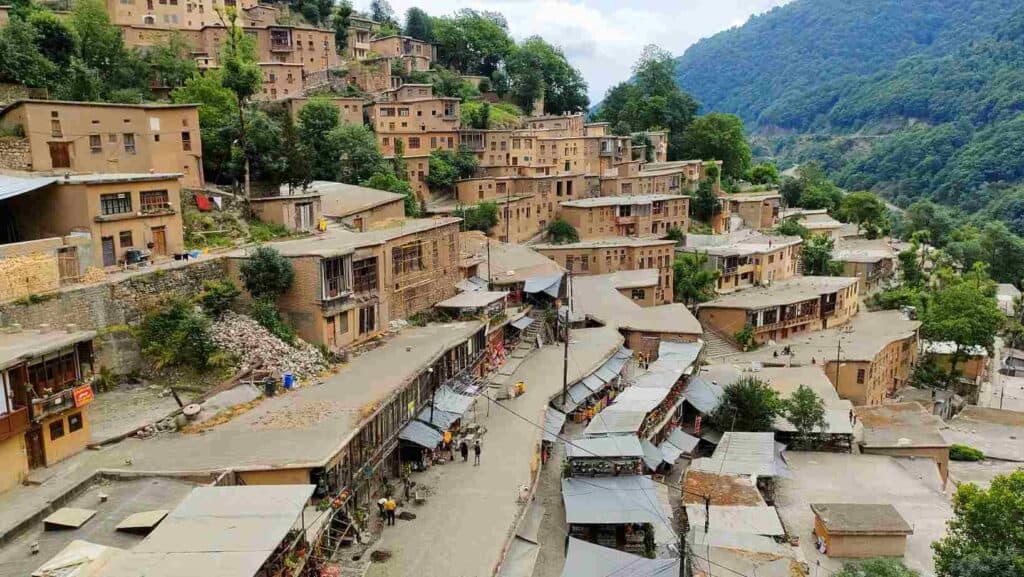
The history of Masuleh starts with the old village about 6 km away, of which not much is left anymore. Yet, it was once a thriving commercial center thanks to its iron mine. Then an earthquake, epidemic, and other disasters led to the eventual construction of the new village. They did not only rebuild Masuleh on a steep hillside because it is good-looking but also for practical reasons. The stepped style protects it from floods, and in the cold winter, it catches the sunrays on a larger surface.
Do not forget to taste the best-known specialty of Masuleh, the “mirza ghasemi,” a blend of eggplant, tomato, garlic, and eggs!
On weekends, when picnic-loving Iranians arrive in crowds, the smell of grilled meat and nargileh spreads over the village. Masuleh is one of the most beautiful places in Iran.
Stroll around the stepped village and check out the Masuleh waterfall only 10 minutes from the center.
Where to sleep in Masuleh?
I arrived late, and people immediately approached me to offer a room. Prices are higher at the weekends than on weekdays. At the weekend my room cost 3 million rials.
Aram hotel: 3 star
Aman boutique hotel
How to get from Ardebil to Rasht?
Savari Ardebil- Astara: 500 000 rial
Savari Astara Rasht: 1 050 000 Rial
How to go from Rasht to Masuleh?
From Rasht you need to take a shared taxi to Fuman: 40 minutes, 400 000 rials per shared taxi depending on the number of people. Ask the driver to take you to the junction with the road going to Rudkhan.
From Fuman to Masuleh: 50 minutes, 600 000 Rial with a private taxi, 200 000 rial with a shared taxi.
1 night in Masuleh
Day 8: Rudkhan castle, Lahijan
From Masuleh head to the Rudkhan castle through Fuman.
Rudhkhan castle in Gilan province
The castle follows the topography of the mountain region. It was probably initially built during the Sassanian period (3-7th century) and rebuilt in the Seljuk times (11-12th century), but there is no precise information about that. The fortress had a military purpose of defending the northern regions from Arab invasion. What is sure that it was in use till the 18th century. The extreme humidity and lush vegetation have threatened the castle with being absorbed by the tropical forest. But for a visitor, this is a unique charm of that. It was divided into two parts: the ruler and his harem’s palace, and the other part was reserved for soldiers and military activity.
Entrance fee for foreigners: 250 000 Rial
Book a local tour from Rasht to the Rudhkan castle
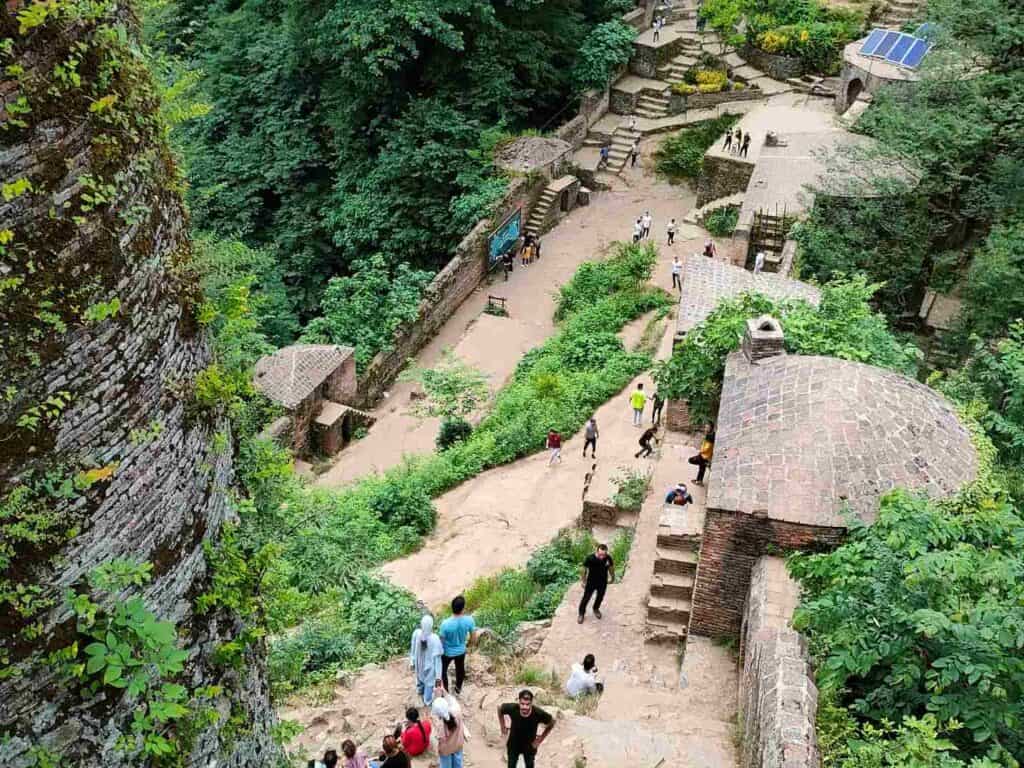
How to go to the Rudkhan castle from Masuleh?
Take a shared taxi from Masuleh to the junction in Fuman to Masuleh. Here you can find another shared or private taxi to the castle. (40 minutes, 600 000 Rials with private taxi).
It takes one hour to climb to the top of the hill to the castle ruins. At the beginning of the trail, there are several food stalls and souvenir shops. During peak summer weekends, local and foreign tourists flock to Rudkhan. Although the hiking trail passes through a forest in shadow, the humidity is very high, which makes it a little harder, especially for a woman wearing a scarf, but nothing that an average person with some stops could not complete. And it is worth the effort without a doubt.
After having climbed to the Rudkhan castle, return to Fuman and to Rasht to get a shared taxi to Lahijan.
As mentioned, Gilan is Iran’s most beautiful green and mountainous region. Locals love escaping from the summer heat of the big cities and enjoying the fresh air mountain air in one of the villages. If you want to spend some time in the mountains, Masal, Olesbelangah and Soobatan are beautiful villages that are reachable from Rasht. Masal (1 hour from Rasht), Olesbelangah village (1 hour from Masal) and Soobatan (2 hours’ drive from Ardabil).
How to go from Rasht to Lahijan?
Taxis depart from the main square in front of the Shahrdari Square Complex to Lahijan.
In the morning you can easily get a share taxi, however, in the afternoon you may need a private taxi.
A private taxi costs 900 000 Rials and takes 1 hour.
Lahijan
Lahijan has a fantastic landscape with a combination of rice fields and tea plantations enveloping the hillslopes around the city. The National Tea Museum explains how Lahijan became the first city in Iran to cultivate tea thanks to a diplomat. Different types of tea sets and photos are displayed. However, taking a cable car to have an amazing view and walking among the tea bushes is more interesting. Apart from the tea plantations, you should check the Lahijan lake in the center with the artificial Lahijan waterfall nearby, the favorite place for locals to spend their evenings. Before continuing to Ramsar, you can visit the Sheikh Zahed Gilani shrine, a popular pilgrimage site with the tomb of a famous spiritual person from the 13th century that is still a popular pilgrimage site.
This is a more detailed travel guide about Lahijan and its tourist attractions.
2 nights in Ramsar
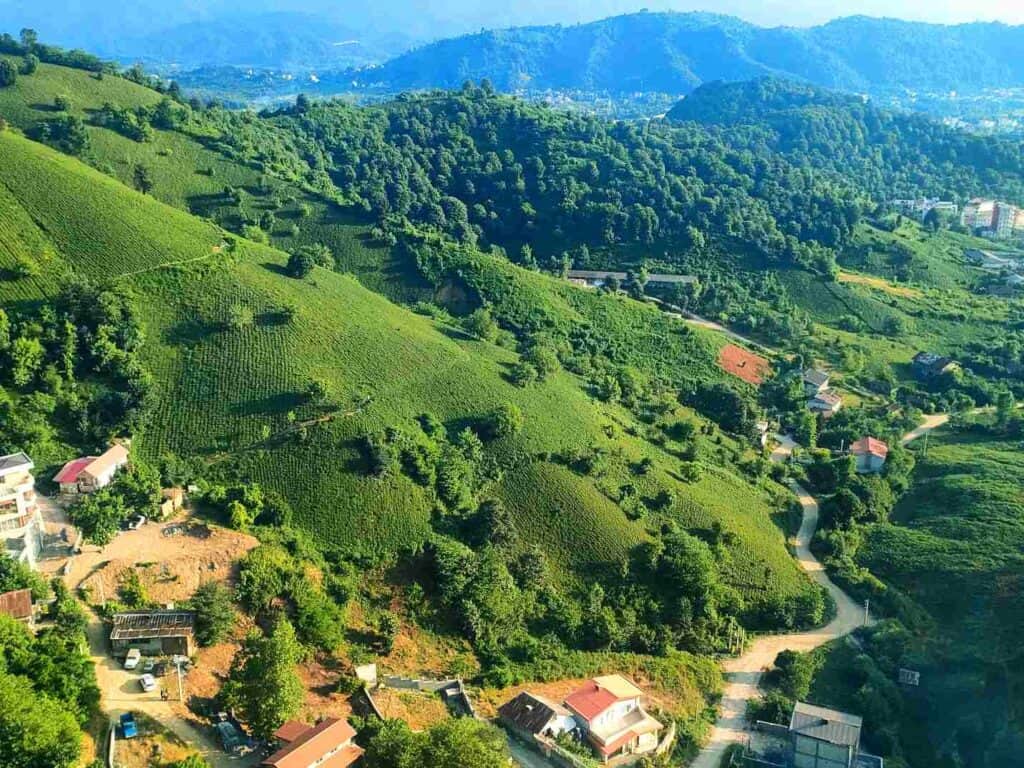
Day 9: Ramsar
Spend the day discovering Ramsar, the city with the most stunning scenery along the Caspian coast. Walk along the shore of the largest lake on earth and take a cable car to get to the best viewpoint of the city and its beaches. The casino Boulevard is another landmark of the city, with the iconic Ramsar hotel at the end.
Ramsar has great importance in environmental protection as this is the city where the Convention of Wetlands was signed in 1975.
One of the most visited museums in Iran, the Ramsar Museum palace is also a must-see, which was once the summer palace of the Pahlavi rulers.
I wrote a more detailed travel guide about the places to visit in Ramsar with other essential information.
After Ramsar, you can decide to take the Chalus Road back to Tehran (a shared taxi from Ramsar to Tehran costs 3 500 000 Rial) through the most scenic road of Iran, the Chalus road. It is hard to estimate the length of the trip as extreme traffic jams can significantly increase the 5 hours travel time during public holidays and weekends. This famous 160-kilometer-long famous road connects Tehran with the Caspian Coast. At the time of its construction in 1933 by Reza Pahlavi, it was an engineering masterpiece. Every season, the road has a unique face with springs, waterfalls, narrow gorges and breathtaking serpentines. Several restaurants and even hotels along the route cater to the masses of people who take the road. It is not only beautiful but one of the most dangerous roads at the same time. It is open all year long; however, in winter, they close it in case of snowfall or avalanche. The road crosses the Alborz Mountains through a series of tunnels, with the highest point at 2700 meters. Taking a road is an attraction and adventure itself, but better to avoid it during winter, public holidays and weekends in summer.
If you choose this itinerary, then you can catch a bus from Tehran to Gorgan or Gonbad Kavus from Beyhaghi Bus Terminal which is probably the closest station if you stay in Tehran. I spent a day in Tehran and took a night bus from Beyhaghi Bus Terminal to Gonbad Kavus. Otherwise, you can continue your trip in northern Iran without returning to Iran through the Chalus road.
Day 10: Sari, Sefid Chah cemetery, Gorgan
Go from Ramsar to Sari (5 hours).
Apart from a Friday Mosque, Sari does not have many attractions, but it is one of the biggest cities in Mazandaran.
Badab Soort is also called the Pamukkale of Iran, although it is far less impressive than the famous tourist attraction in Turkey. A series of stepped terraces were created over thousands of years as flowing water from two mineral hot springs cooled and deposited carbonate minerals on the mountainside. When the sun falls at the right angle on the water, the pools turn into amazing orange, red, and yellow colors. It is more impressive during spring and winter time, filled with water. However, when the water is scarce in summer, you should consider if it is worth taking the isolated winding and sometimes unpaved roads. It takes 2 and a half hours from Sari to Badab Soort.
From Sari, continue to the mysterious Sefid Chah cemetery, a real off-the-beaten-track destination of northern Iran.
Sefid Chah cemetery
Sefid Chah in Bahshahr between Sari and Gorgan is the first Muslim cemetery in Iran, also called the “white cemetery” because of the soil rich in limestone. It is a mysterious place. The special soil holds back the corpse rot from decomposing. Due to this fact, many people prefer burying the bodies of dead family members and relatives here. The upright gravestones in the cemetery is another unique feature.
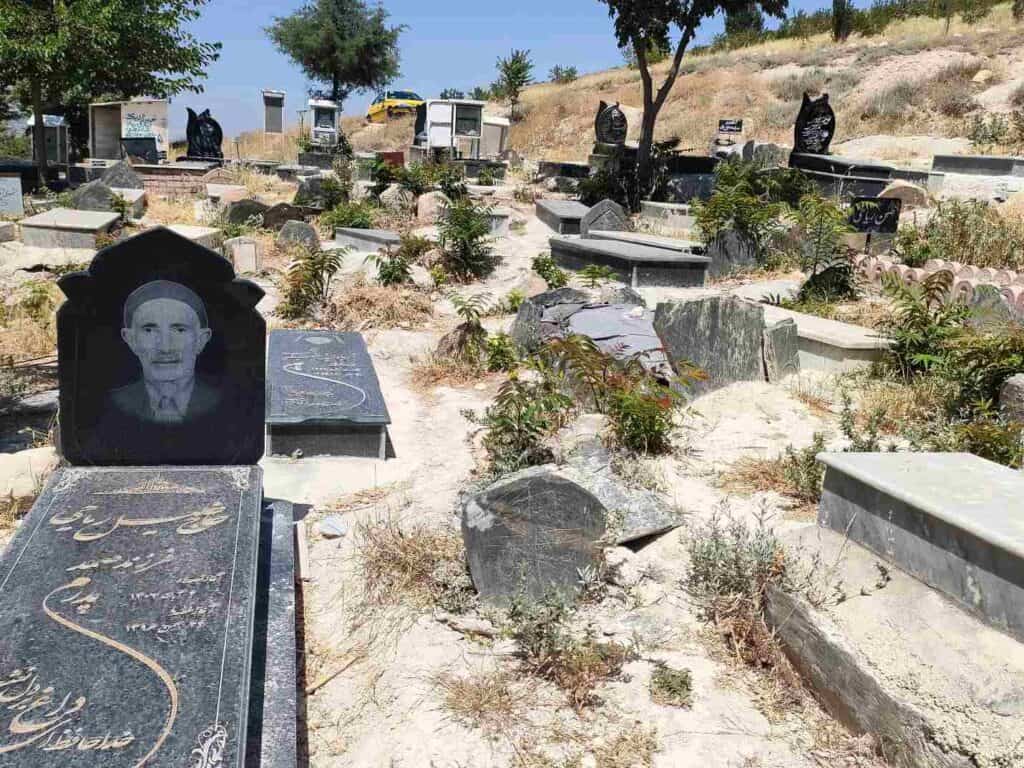
Another remarkable thing is that the gravestones also indicate the profession and the buried person’s character. But when the last stone graver died, this practice also disappeared.
How to get from Sari to the Sefid Chah cemetery?
Take a shared taxi from sari to Galuga (1 hour) and from Galuga to the Sefid Chah cemetery (50 minutes). By the way, although more cities are selling the traditional dish of Mazandaran province, the best one is said to be in Galuga. After that, take a private taxi to the Sefid Chah cemetery.
If you are a nature lover and are interested in birdwatching, you should include the Miankaleh Wetland at this point in your itinerary; that is around 2 hours’ drive from Sari. The Wetland is on the 48-km-long narrow peninsula of the same name and is connected to the Caspian Sea. It is one of the main habitats for migratory birds during autumn and winter, which is the best time to go there, but many Caspian birds nest here the whole year. You can see flamingos, pelicans, red-breasted goose, whooper swan, black francolin, and peregrine falcon. It was also listed as a Ramsar site in 1975.
Radkan tower of Kordkuy
On the way to Gorgan, you can stop at Kordkuy and take a private taxi to the Radkan tower. It is a bit confusing that there are two Radkan towers in Iran. One here in Golestan province and another one in Razavi Khorasan province. From Kordkuy, you need to get a private taxi and negotiate the price. It can cost around 3-4 million Rial (1.5 hours one way).
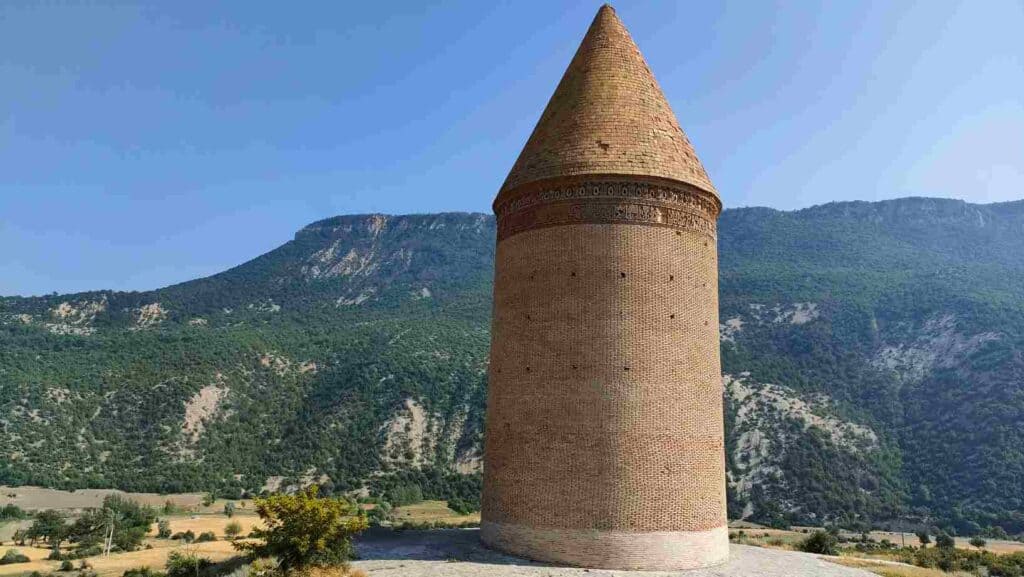
A paved road leads through a forest area, and then an unpaved one continues till the tower. Passing through some villages, you get a sight of the 35-meter-high conical-shaped tower with Kufic inscriptions. The tower was built of brick, like the Gonbad-e Kavus tower. While you may consider it worth driving that distance for a tower, I was impressed by the scenery, visiting a hidden gem in northern Iran, and going off the beaten track.
From Kordkuy you can get a taxi for 400 000 rials.
2 nights in Gorgan
Where to sleep in Gorgan?
There are cheap guesthouses around the Shahradari square.
Hotel Bahman (3 star)
Hotel Azin (4 star)
Day 11: Gonbad-e Kavus, Khalid Nabi cemetery
Gorgan is a good place to stay for the night, but otherwise, it is better to continue to Gonbad-e Kavus the day after.
Gonbad-e Kavus is another big city in Golestan Province. The city’s main attraction is the tower of the same name registered as UNESCO World Heritage. It was built near the ancient settlement, Jorjan, which was once a center of arts and science. The Mongol invasion destroyed it in the 14th and 15th centuries, and apart from the tower, nothing is left from that.
The Gonbad-e Kavus cylindrical tower built in the form of a ten-pointed star is the mausoleum of the Ziyarid dynasty’s ruler Qabus who constructed it during his lifetime in 1006. However, the ruler is not buried inside. Some say his body was hanging from the roof by chains in a glass coffin.
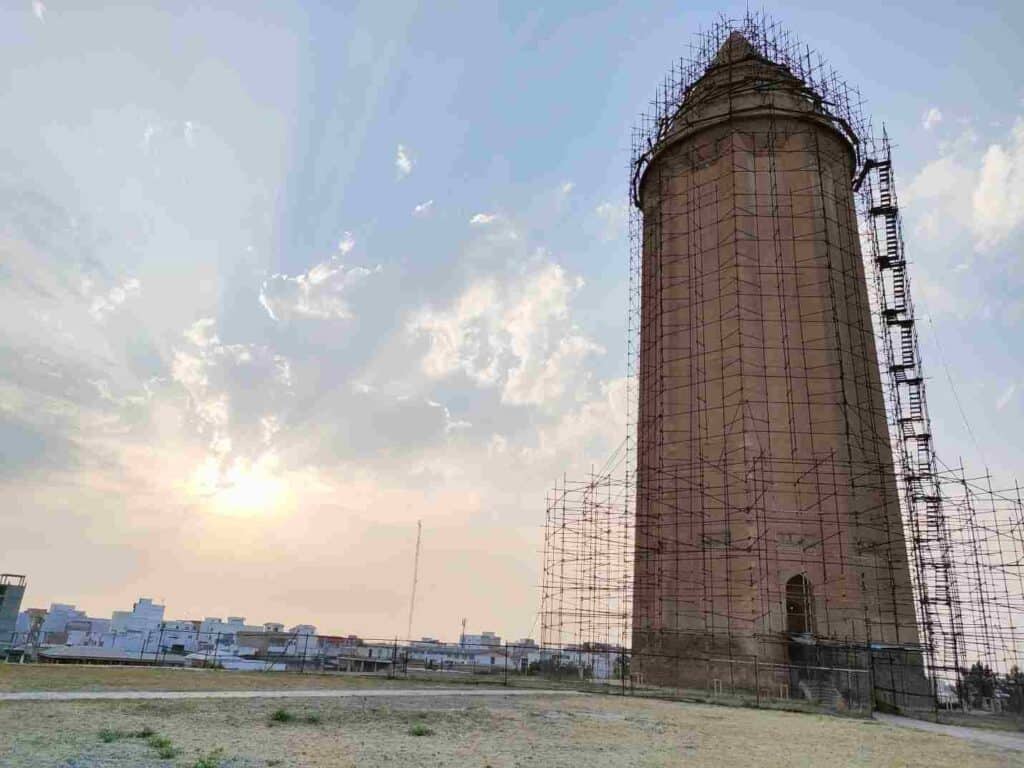
At the time of its construction, it was unique because of its size and architectural elements. It is one of the first times that the typical Islamic decorative element, the muqarna, was used at the entrance.
Including the conical roof, it is 50 meters high. However, as it stands elevated, it can be seen from a distance of 30 km. The tower has a simple design. The two inscriptions above the entrance and below the ring are the only decorations.
The tower survived more than 1000 years because it was built of high-quality brick material.
Entrance fee: 1 million Rial
You can see the tower from the public park next to that, but it is worth paying the entrance fee to get closer and inside.
How to go from Gorgan to Gonbad-e Kavus?
Shared taxi from Gonbad-e Kavus to Gorgan’s main Shahradari square: 400 000 rials/ 1.5 hours
Interesting: Horses are at the heart of Turkmen culture, whether for religious festivals, weddings, or tribal events. Gonbad-e Kavus is one of Iran’s three cities where horse races occur during the spring and fall seasons. There is even a horse-beauty competition every year in Kolaleh, Golestan, 50 kilometers from Gonbad-e Kavus, with a horse action the day before.
Khalid Nabi Cemetery – one of the most unique places in northern Iran
Khalid Nabi cemetery is located in the Turkmen Sara region, with mainly ethnic Turkmen people living here. You will notice the different faces in this part of Iran close to the border with Turkmenistan.
The road to the cemetery was probably the most beautiful part of my trip through northern Iran, with uniquely shaped barren mountains. It is a less-traveled part of Iran, but simply amazing.
There are two places to visit in Khalid Nabi: the shrine of Khalid Nabi, an Arab prophet who lived 40 years before Prophet Mohammad. Khalid Nabi means Khalid prophet in Turkmen. He is a highly respected prophet among the Turkmens, who was born in Yemen but fled to this part of Iran during the Sassanid, pre-Islamic rule over Iran. Turkmen pilgrims still come to pay their respect to the prophet, so there are some guesthouses, small shops, and a mosque to cater to them.
If you want to look closer, a steep path leads down to the shrine from the parking lot.
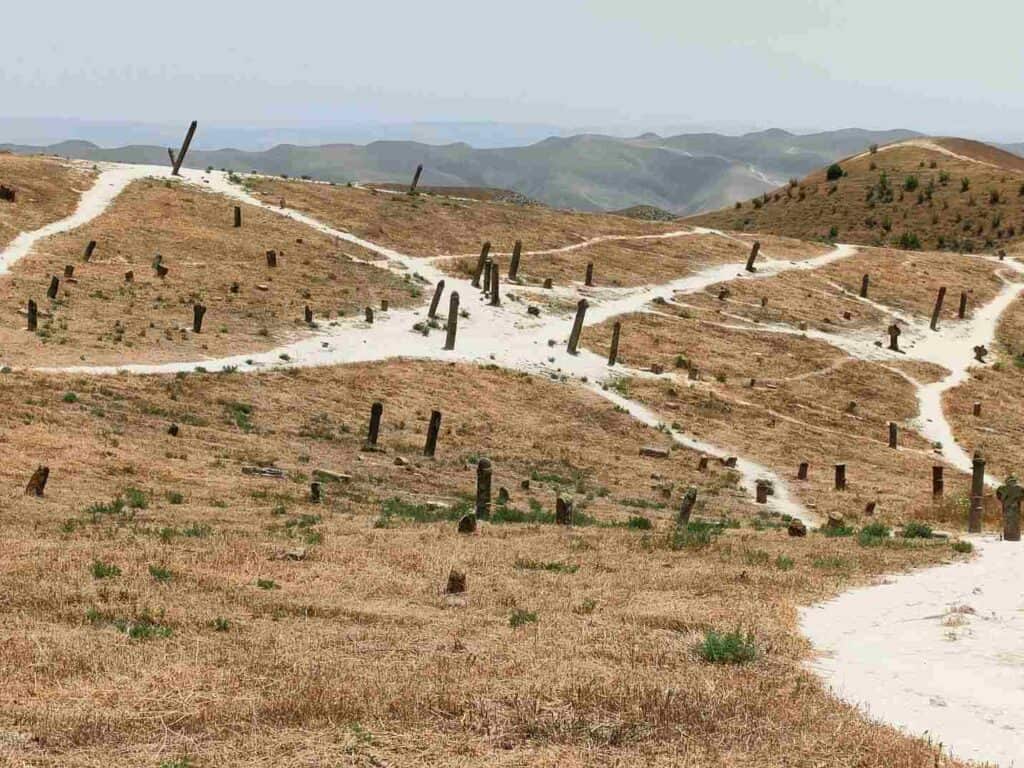
The other important place to visit is the Khalid Nabi cemetery. For that, you need to take the other direction from the parking lot and take the path down. It takes 20 minutes to enter the mysterious graveyards with hundreds of headstones scattered around. Some are smaller, some bigger than a human being, and have different shapes. At first sight, they seem to take the form of male and female genitalia. Some are cylindrical and capped, while others are paired and rounded. Some headstones have human-like forms.
Researchers still investigate the reason for that. Some say it is linked to pre-Islamic fertility cults.
According to the belief, the graves belong to people who were cursed by God for their sins. Whatever the reason, the cemetery is declared a national heritage, assumed to date back to the Palaeolithic era.
How to plan your trip to Iran
Book your flight to Iran: I always use Google Flights, Skyscanner or Wayaway to find the cheapest flight tickets worldwide. To get an extra 10% for your Wayaway Membership Plus program use my discount code VOG
Important: Booking.com and other common platforms do not work due to international restrictions in Iran. The only exemption is Skyscanner, where you can book both your international flight and accommodation in Iran!
Book your accommodation in Iran: Hostelworld.com offers a limited number of hostels. All other services are only available through local travel agencies, like 1st Quest.
Get your visa to Iran: 1st Quest or Tap Persia local companies can easily arrange your insurance for Iran
Book domestic flights, hotels, transfers, bus and train tickets, and local tours, all in one place via 1st Quest travel agency.
Another good thing is that by using my discount code, you get an extra 5% off your bookings: VOG%1stQ
Virtual Private Network (VPN): Use VPNExpress, the fastest and best Virtual Private Network to get access to blocked sites in Iran and to prevent hackers from stealing your private information.
Insurance to Iran: 1st Quest or Tap Persia local companies can arrange for you visa to Iran
Book local guides and local tours: Pirsik is specialized in offering tour guides and local tours in less touristic countries, including Iran.
What is the best time to go to Khalid Nabi?
The best time to come here is spring and autumn when the surrounding hills turn green. However, if you come in summer, the barren mountains still look fantastic.
Khalid Nabi should be on your list when traveling to northern Iran! It was one of the highlights of my trip.
How to go from Gonbad-e Kavus to Khalid Nabi?
You can only go there with a private taxi, for which as usual you have to negotiate the price. I paid 3 million rials for two ways with the driver waiting for you until you visit it. It took almost 2 hours to get there.
From Gonbad-e Kavus take a shared taxi back to Gorgan.
Lowe (loveh) waterfall
On the way back from Khalid Nabi cemetery to Gonbad-e Kavus, you can make a detour to the most waterfall of Golestan. It is still not anything remarkable worldwide, but a popular place among locals to cool down during hot summer days. Since there are only limited opportunities for swimming in Iran, it felt good to walk in the water over the rocks.
Other famous waterfalls of Golestan are Shirabad and Kaboudwall waterfalls between Gonbad-e Kavus and Gorgan.
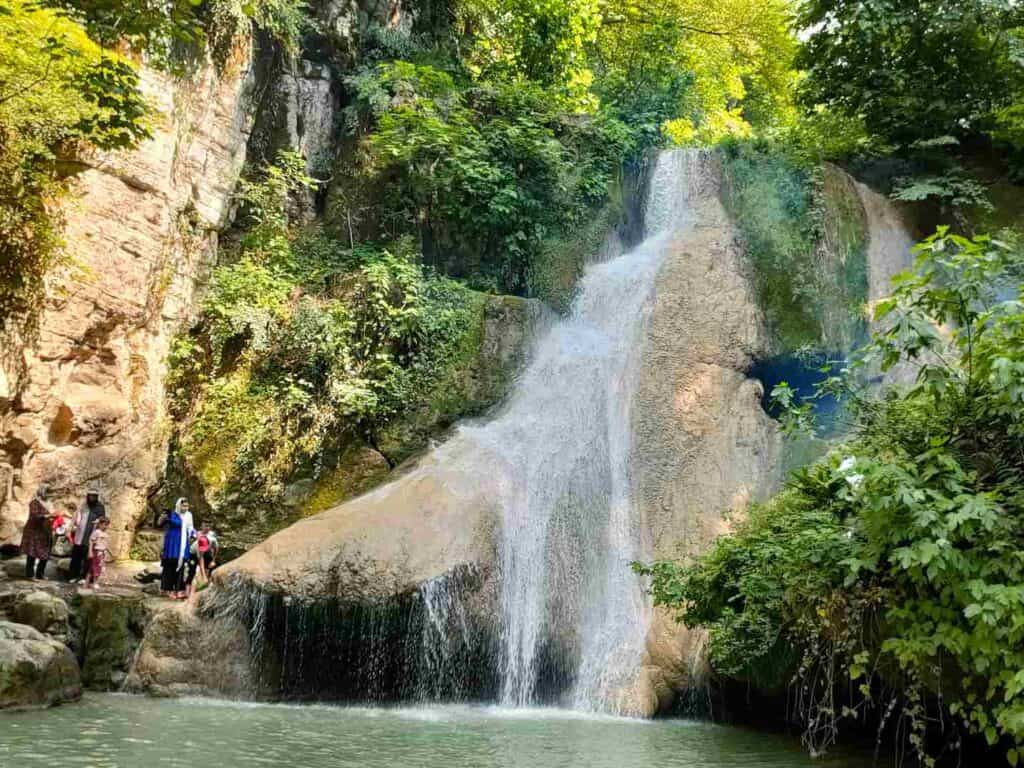
Day 12: travel from Gorgan to Mashhad
From Gorgan, take a bus to Mashhad (950 000 Rials, 9 hours). It is the longest journey during your travel to northern Iran, and you spend most of the day on the bus. There are night buses as well if you want to arrive by morning in Mashhad.
By arriving in Mashhad, you reach the easternmost point of your trip in Razavi Khorasan province.
Day 13: Mashhad, the holiest city of Iran
Mashhad is the holiest city of Iran, visited by millions of pilgrims a year, where the shrine of the highly respected Imam Reza stands. Although the holy shrine is the main attraction of Mashhad, where you can spend hours during the day and in the evening, there are other places to visit in and around Mashhad.
One of my biggest surprises was the thousands of years old Kang village, 40 km from Mashhad. You can also visit the tomb of the famous Persian poet Ferdowsi, the author of Shahnameh.
I won’t go into details because I made a separate travel guide about Mashhad with all the information about places to visit and things to do.
After visiting Mashhad, you could either head back to Tehran or take a detour to see some oasis villages of South Khorasan. This province is much less visited but has a fantastic landscape with fortresses on top of mountains, desert villages, and a great place to observe the agricultural activity in the countryside. Travelers only have a shortstop when they travel between Kerman and Mashhad. However, it came as a surprise to me what hidden gems exist in this province. After that, I finished my trip in the Garmeh village, headed to the Mesr and Varzaneh desert, and returned back to Isfahan and Tehran. If you have more time and like off-the-beaten-track places, I recommend doing the same.
Read more about the places to visit in South Khorasan province.
Day 14: Mashhad, Tehran
There are regular buses (12 hours) and flight from Mashhad to return to Tehran.
Other articles about Iran
What you can and cannot do in Iran
45 things you must know about Iran
The best books to read about Iran
Dress code in Iran: for male and female travelers
The best 2-week itinerary in Iran
All you need to know about the Iranian currency
The best places to visit in Tehran (museums, palaces, religious sites)
The best things to do in Tehran
Travel guide to Tabriz, North Iran
Travel guide to Mashhad, the holy city of Iran
Best things to do in Lahijan, the city of tea in Iran
Best things to do in Ramsar at the Caspian Sea
What to do in South Khorasan province?
More articles about the Middle East
I hope the above itinerary was useful for planning your trip to northern Iran. Although an ideal trip depends on your interest, stamina, and many other factors, I shaped this itinerary for somebody interested in cultural travel but also mentioned other sites that might be interesting for you. Traveling to northern Iran independently is a bit more challenging than taking the classical road due to distances, less developed public transport, and lack of information. However, if you want to travel to Iran in summer or you want to discover some off-the-beaten-track places, don’t miss it. Please leave a comment if you have any questions about that.
Pin it for later!
